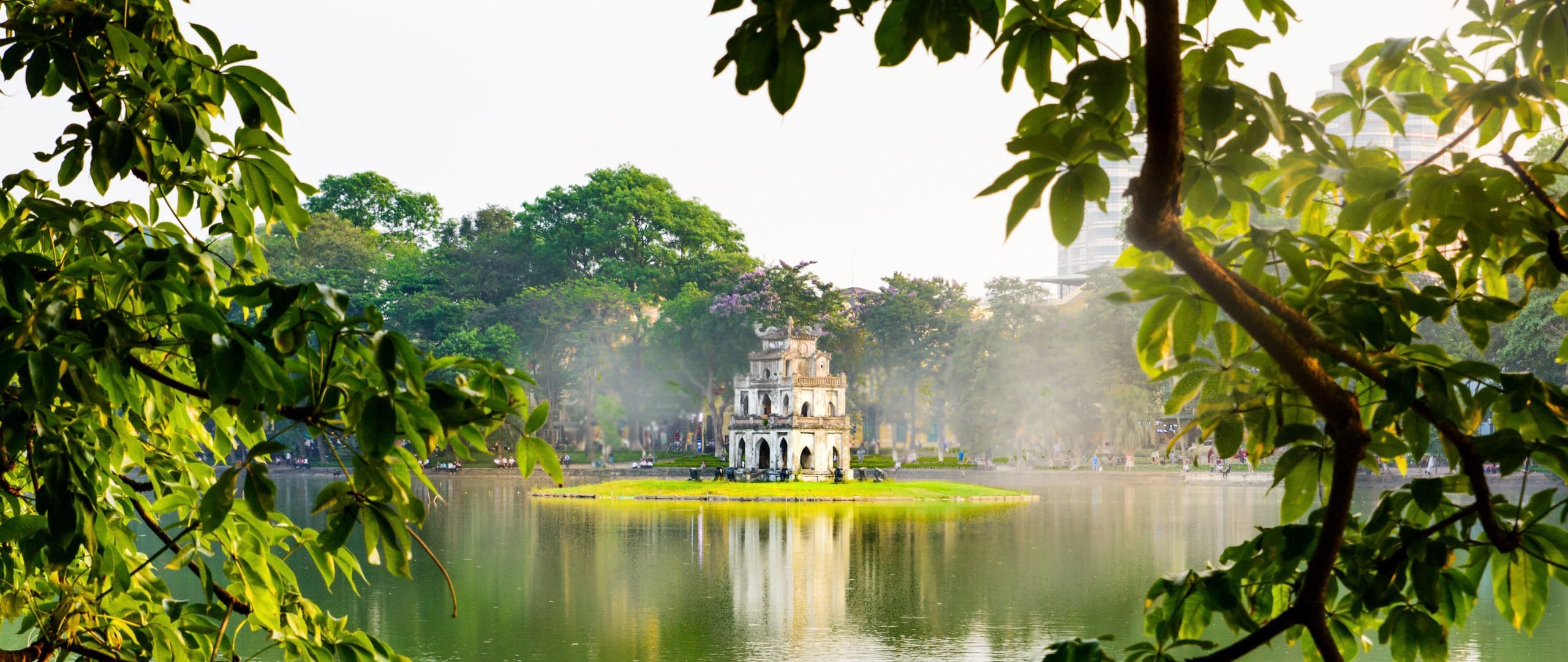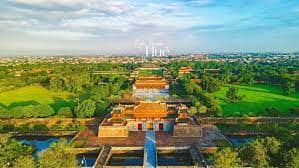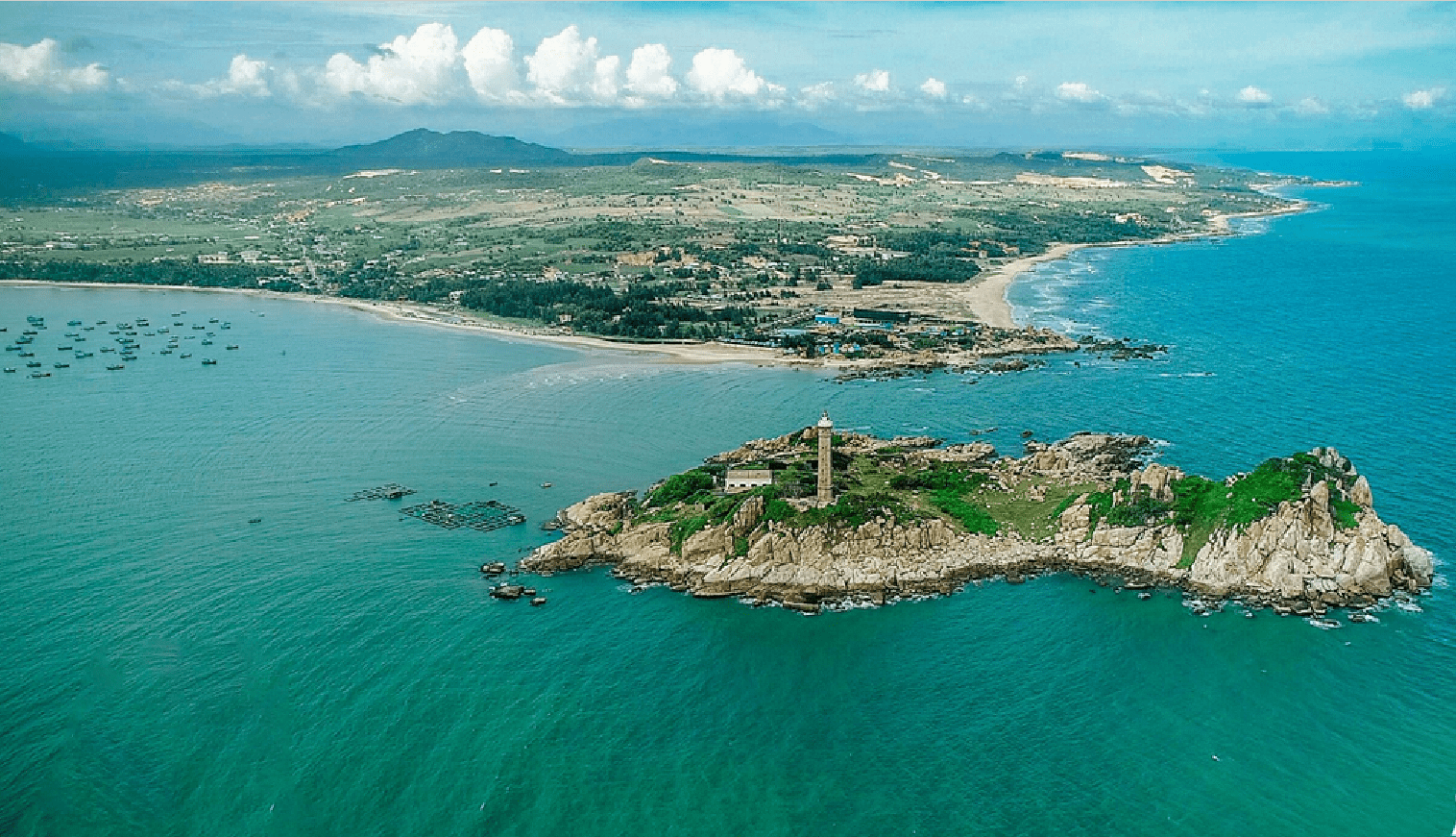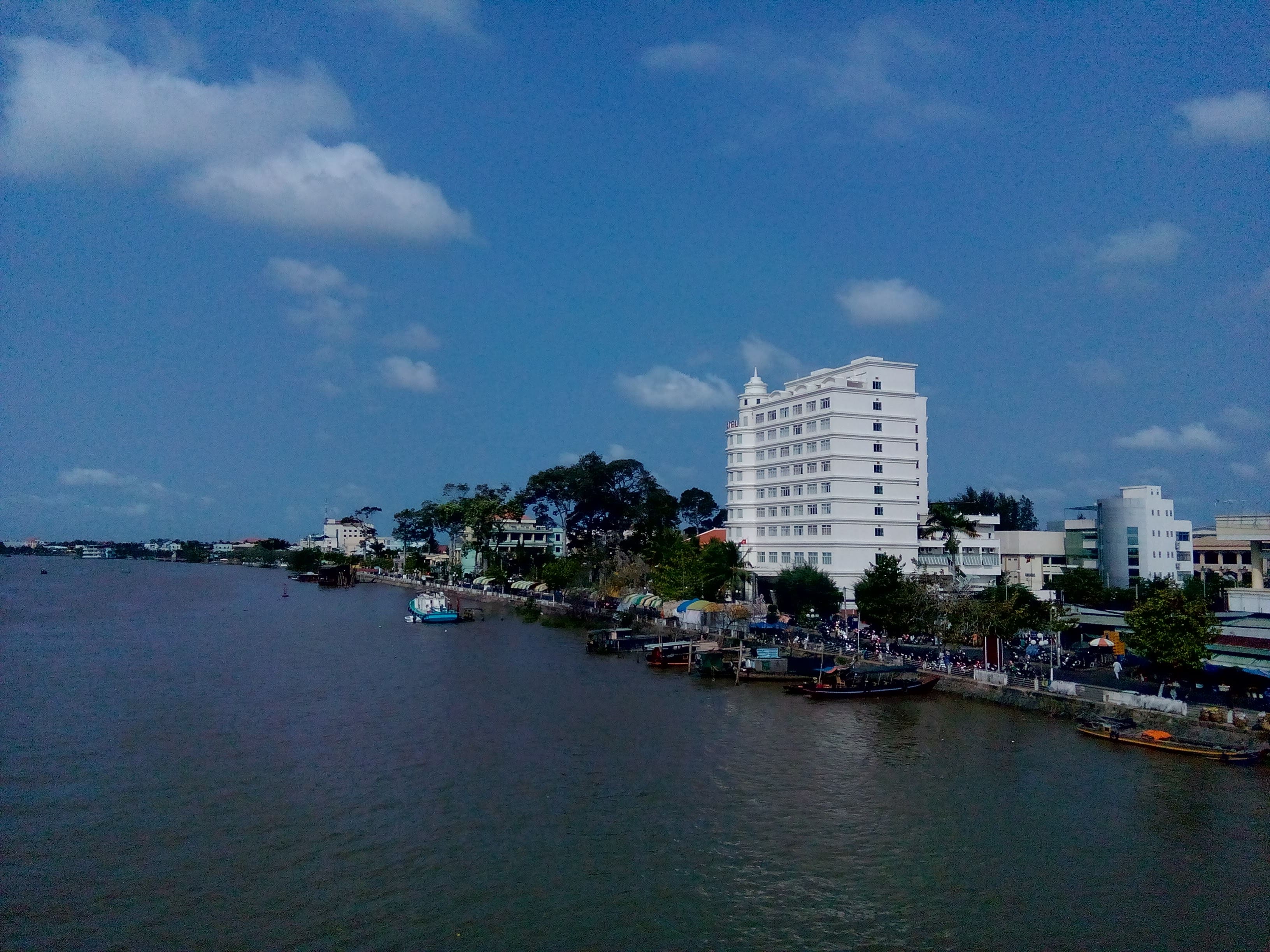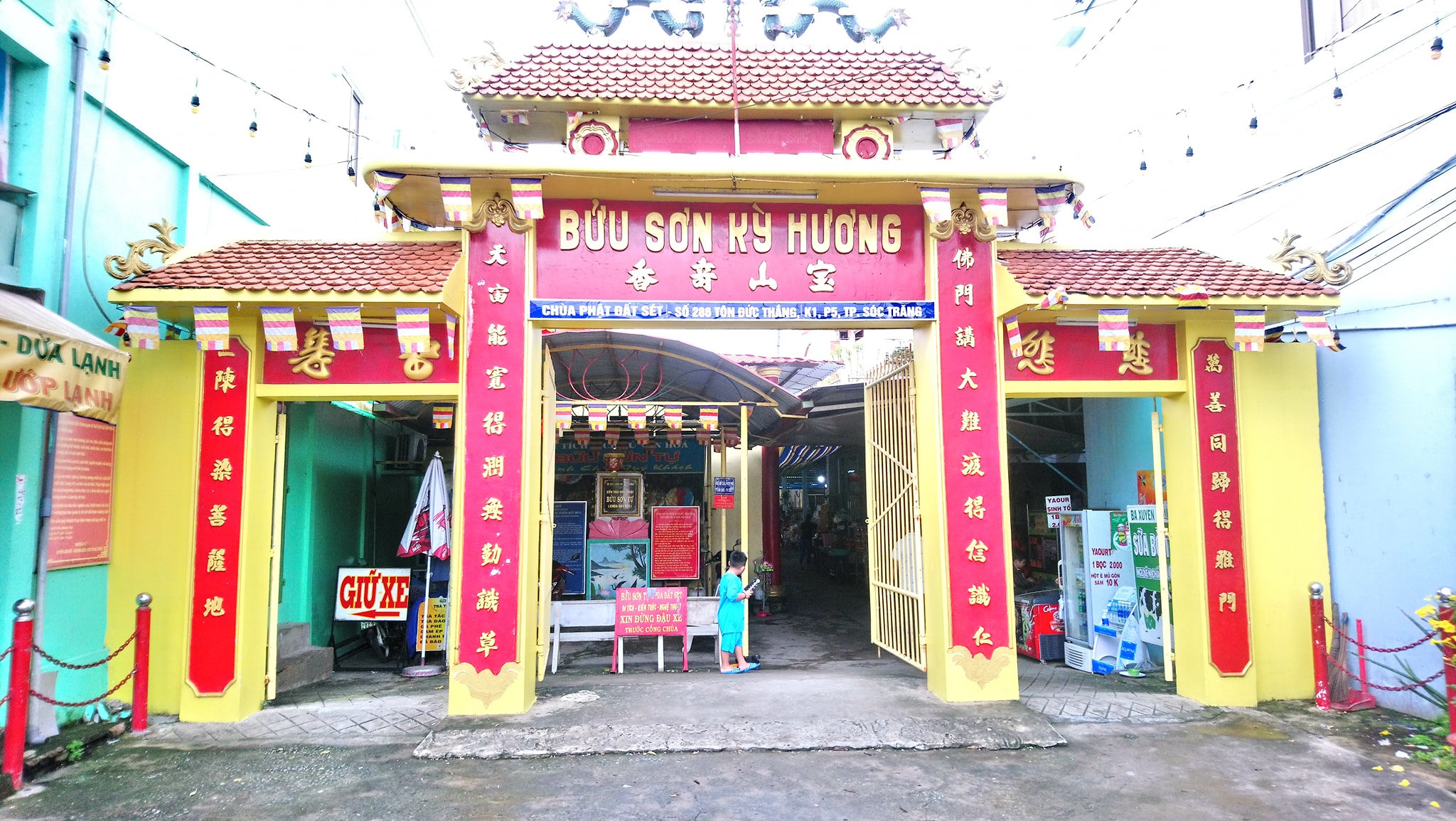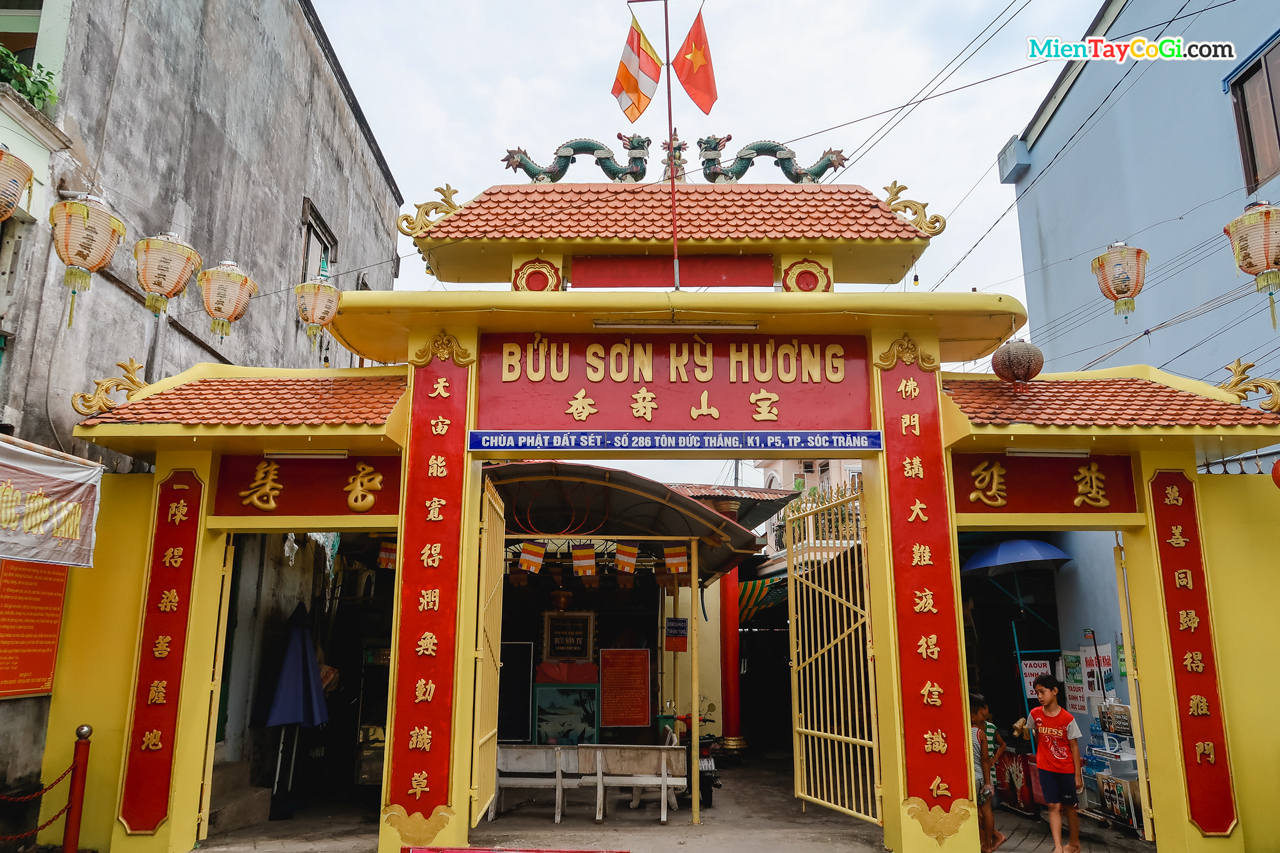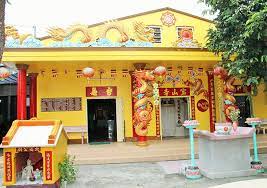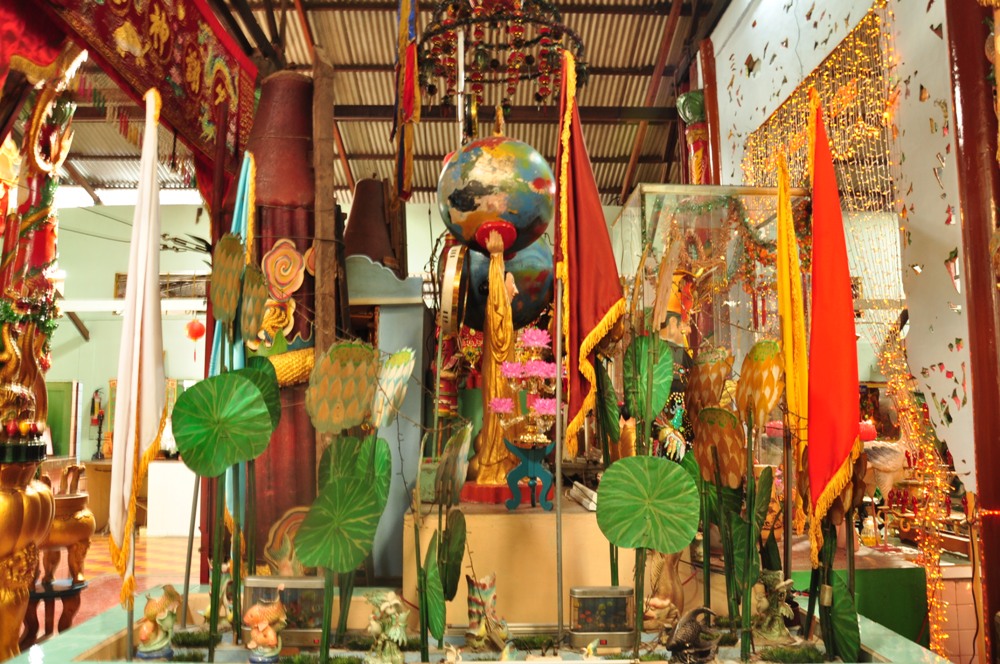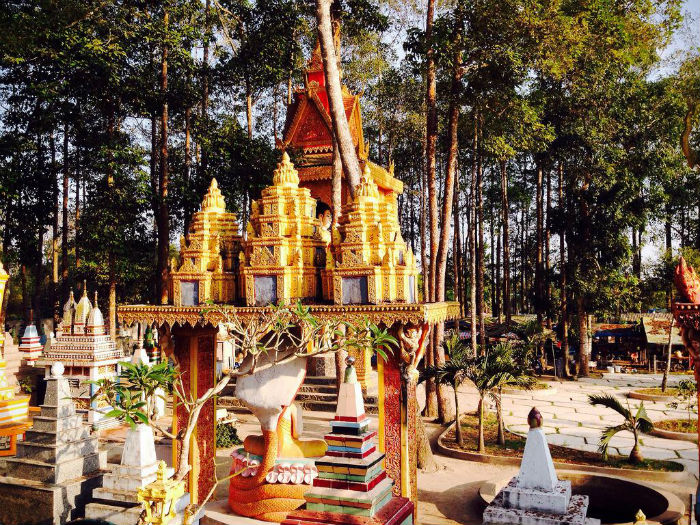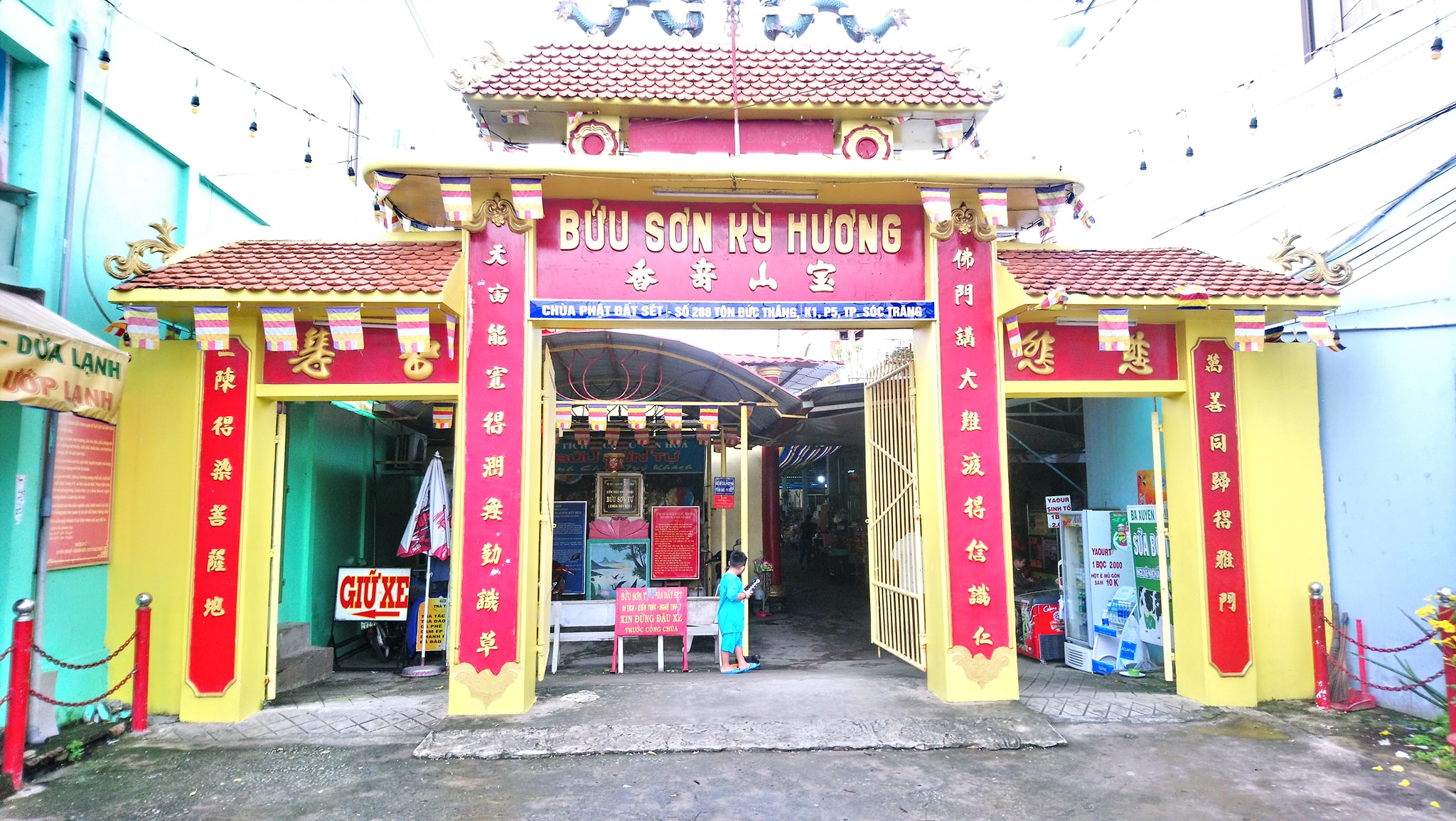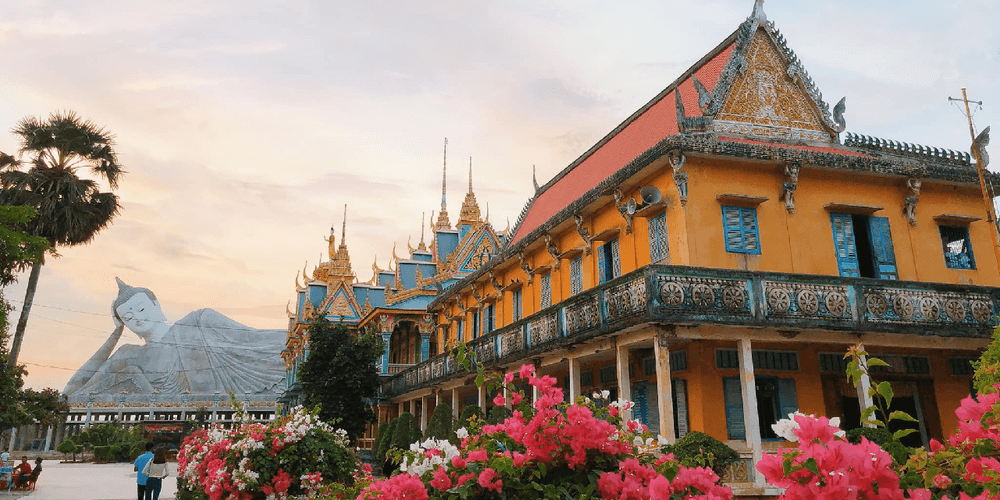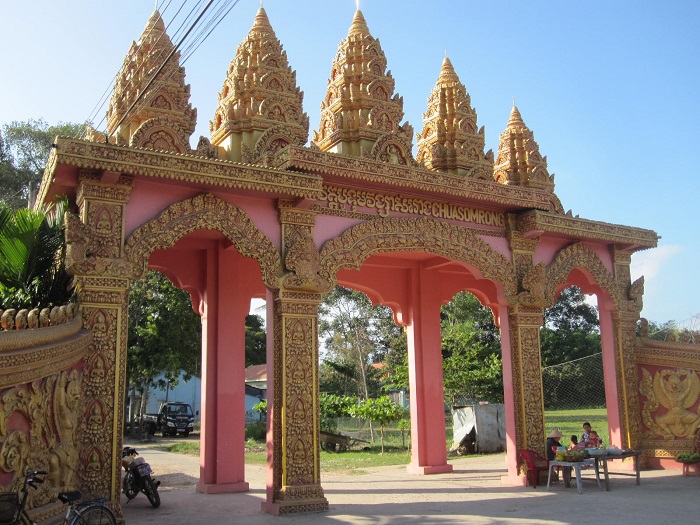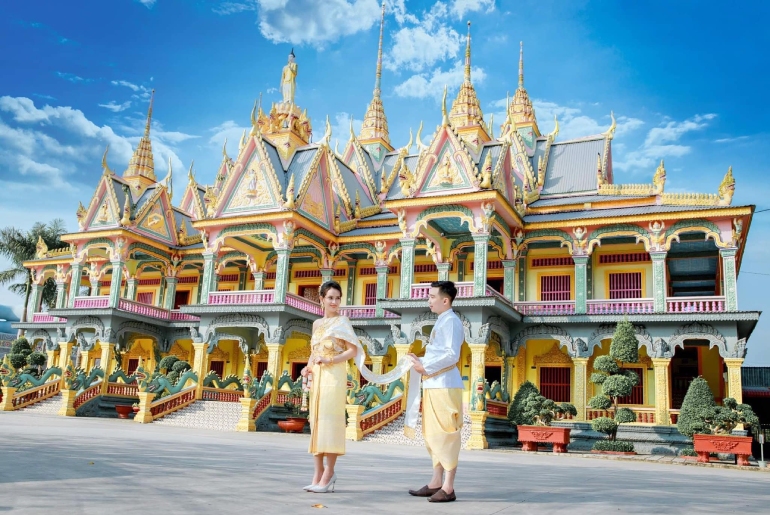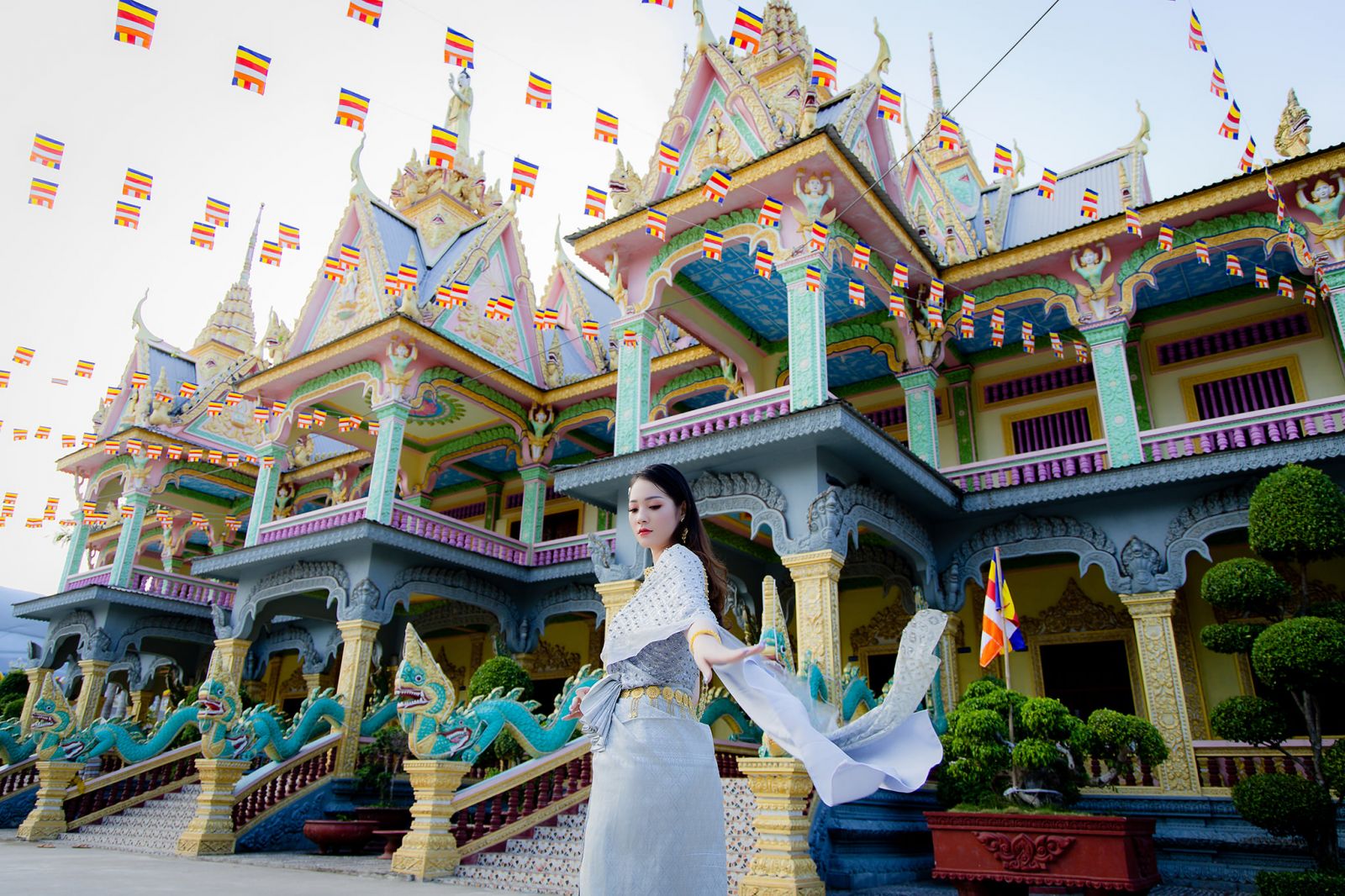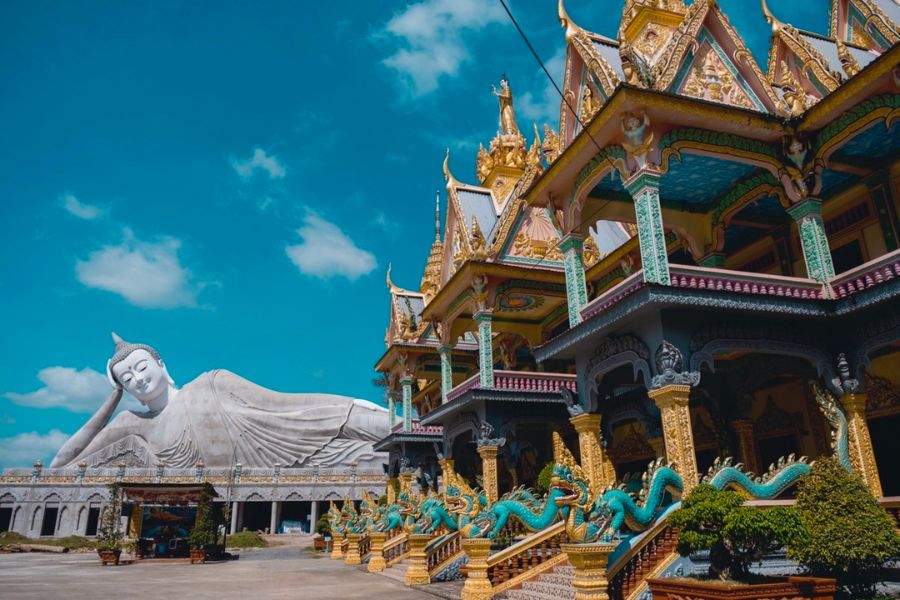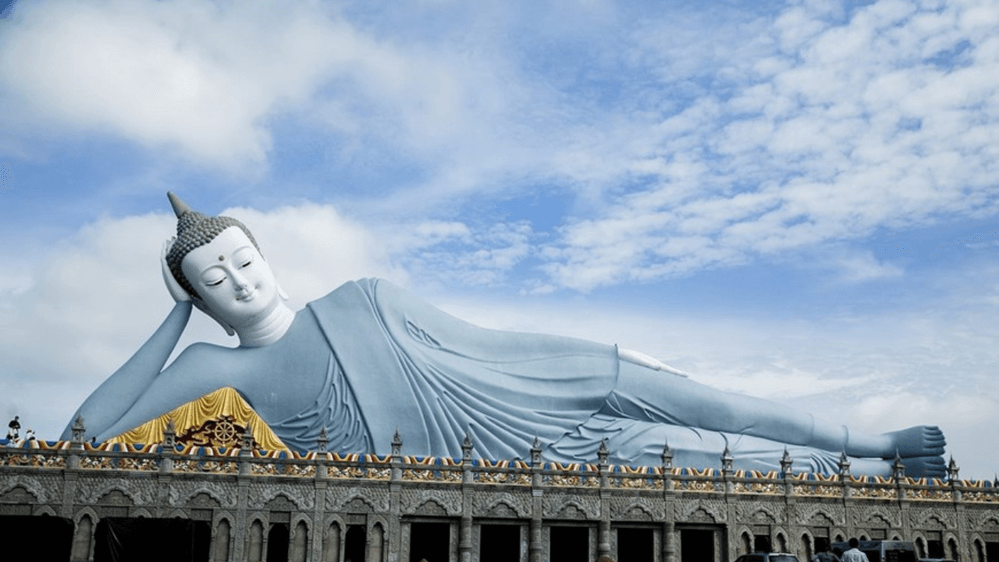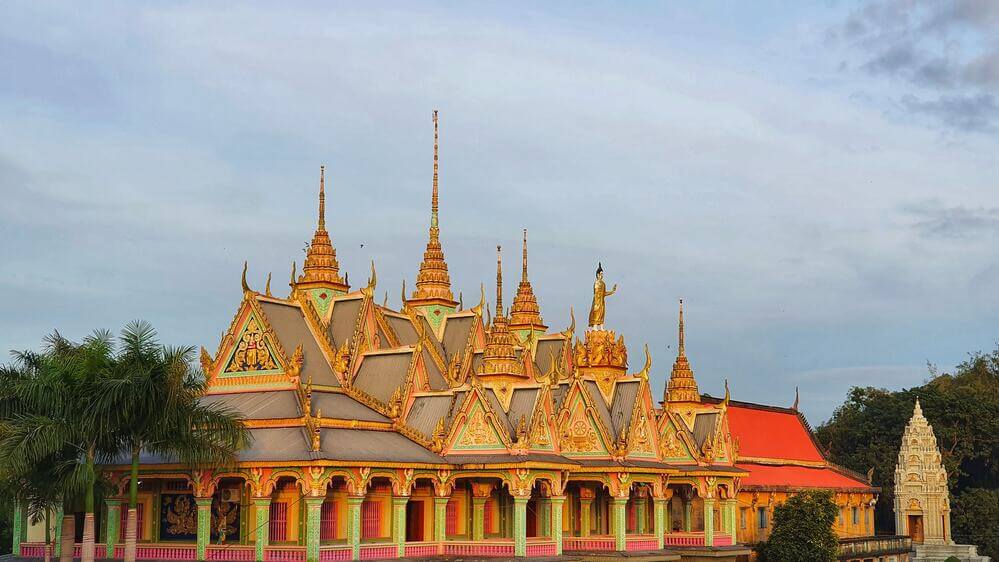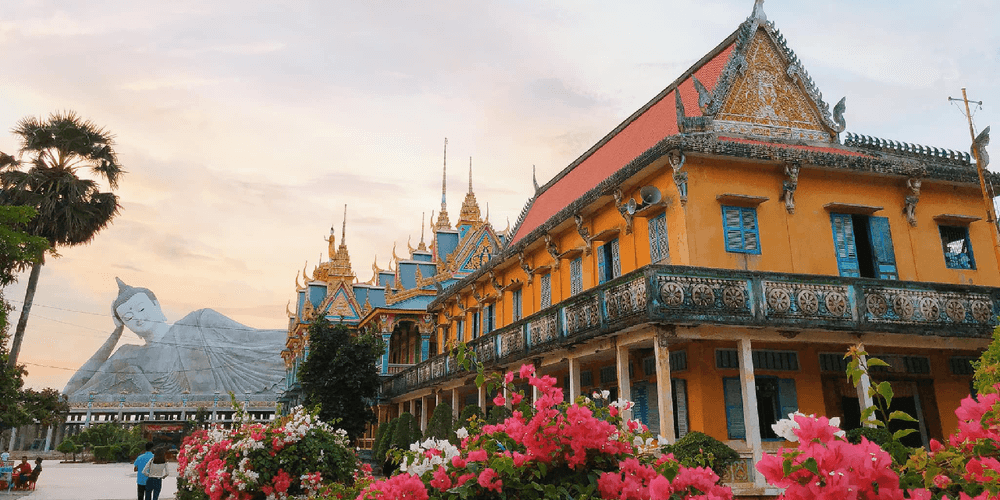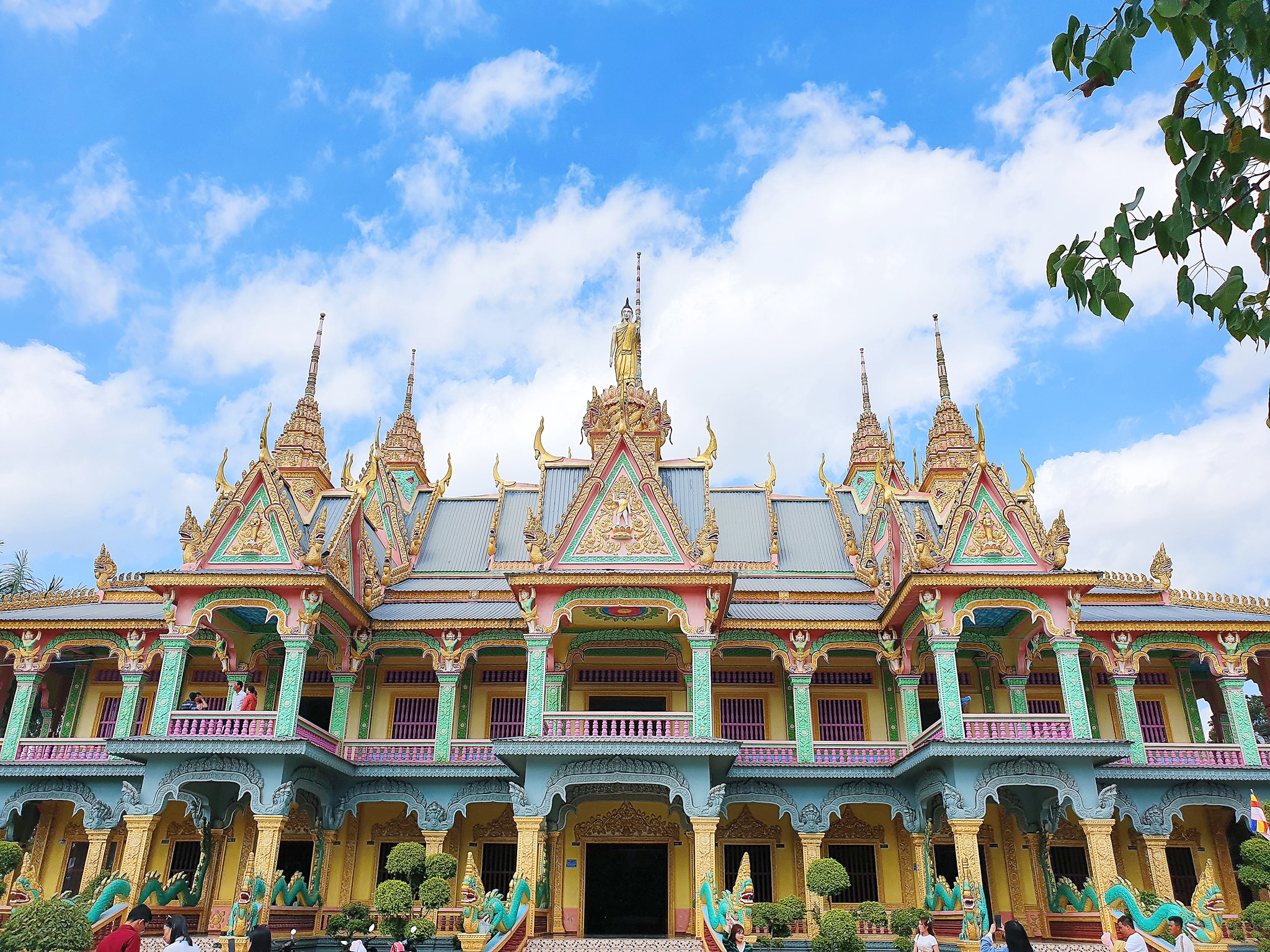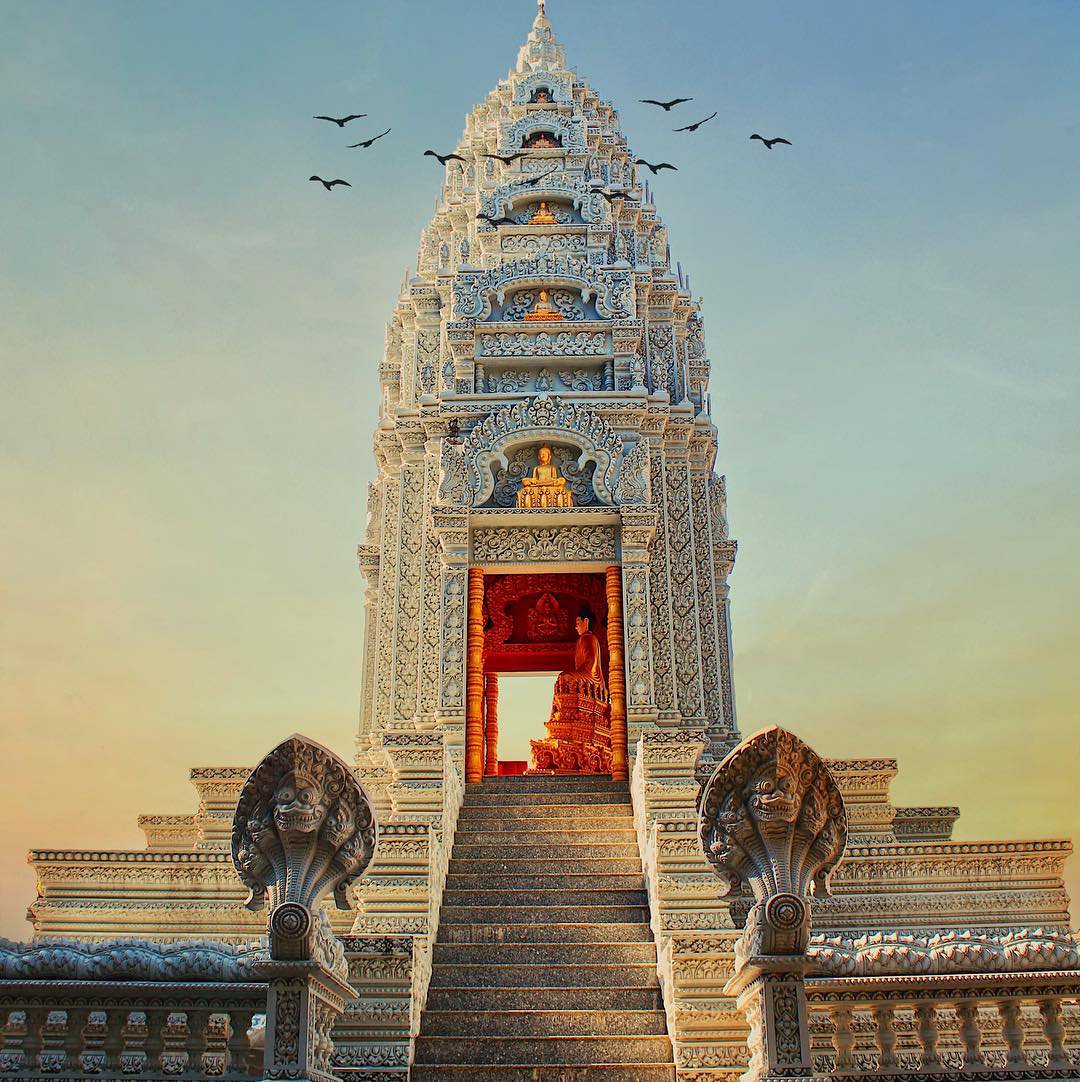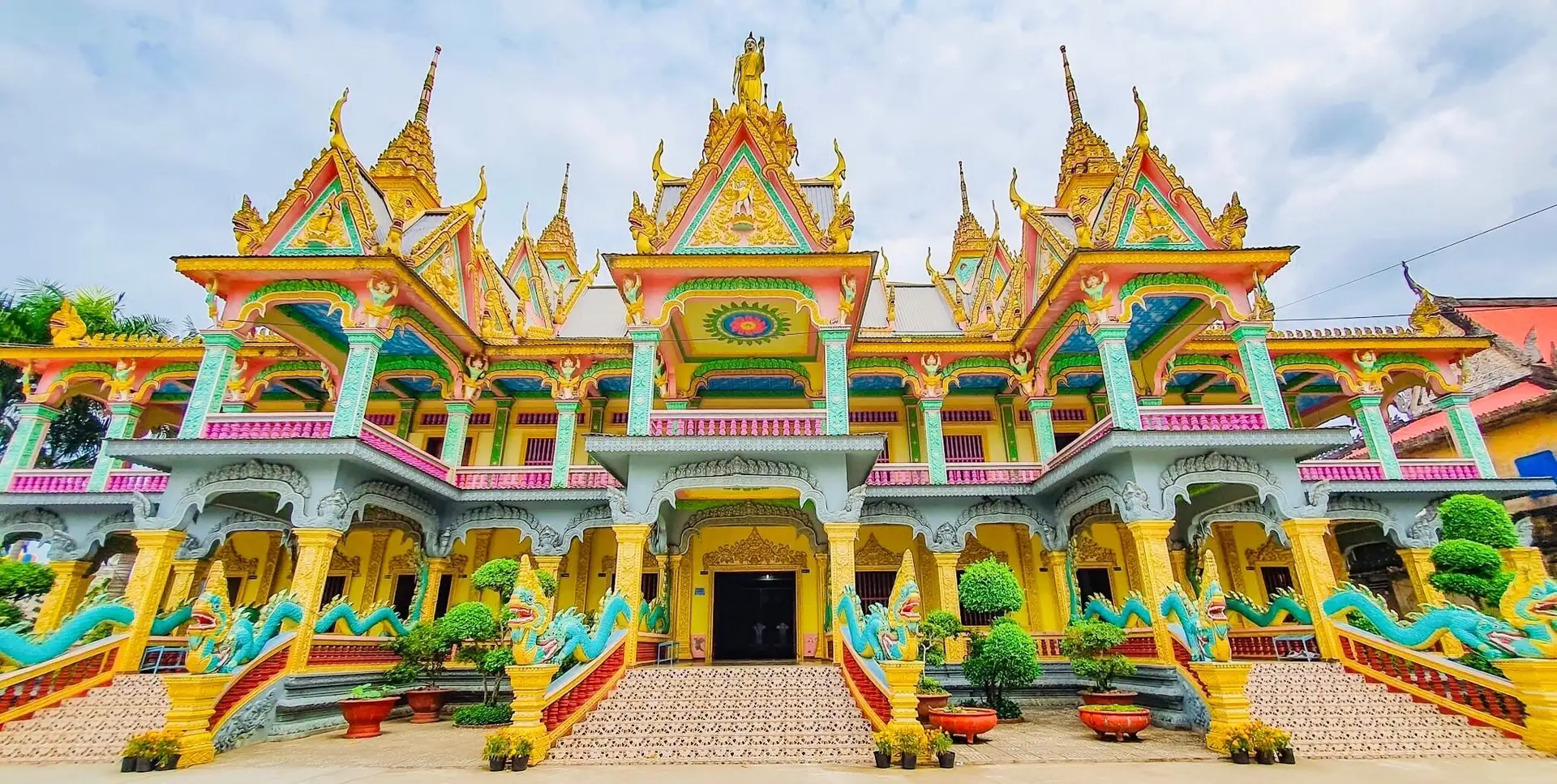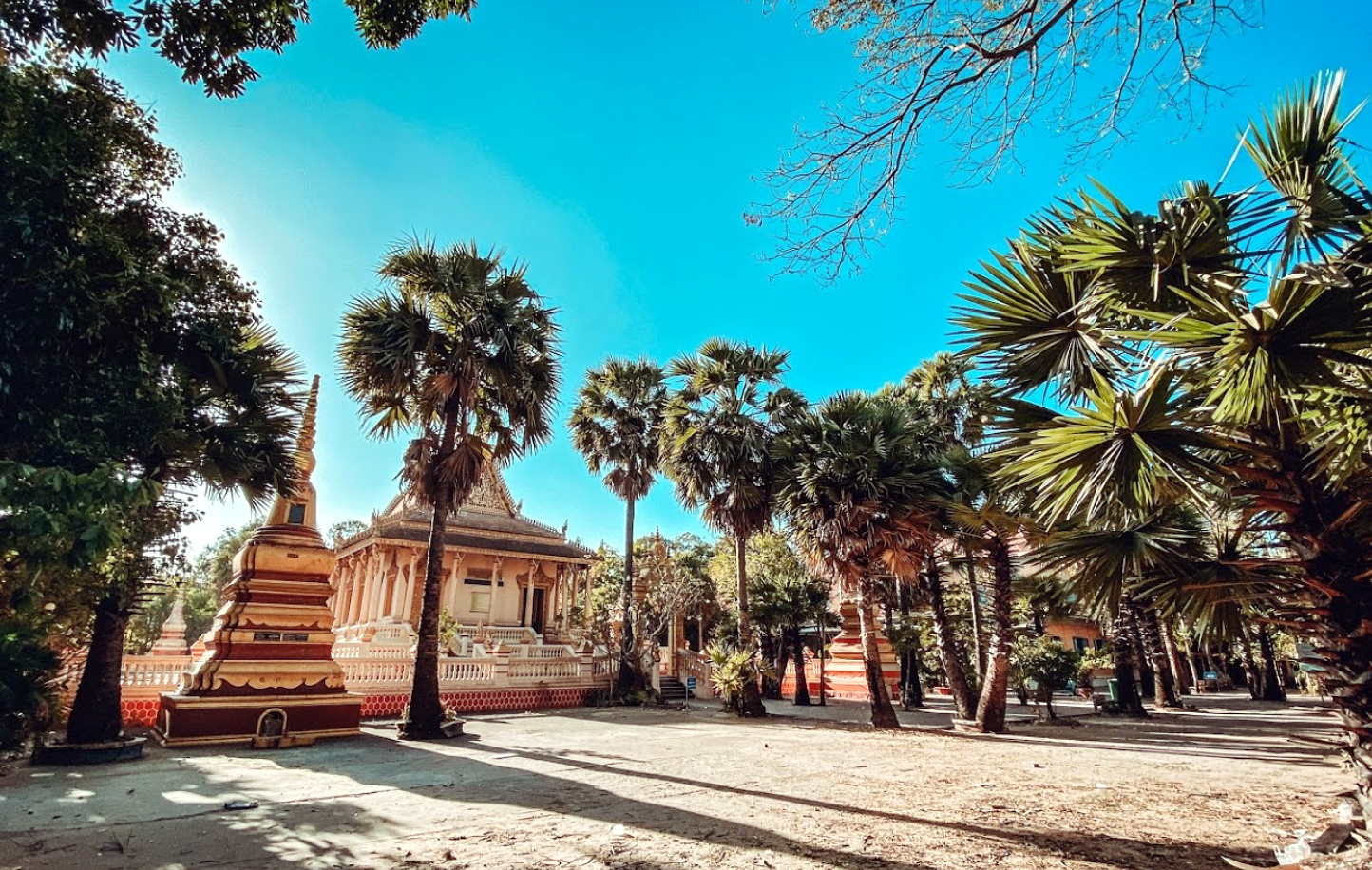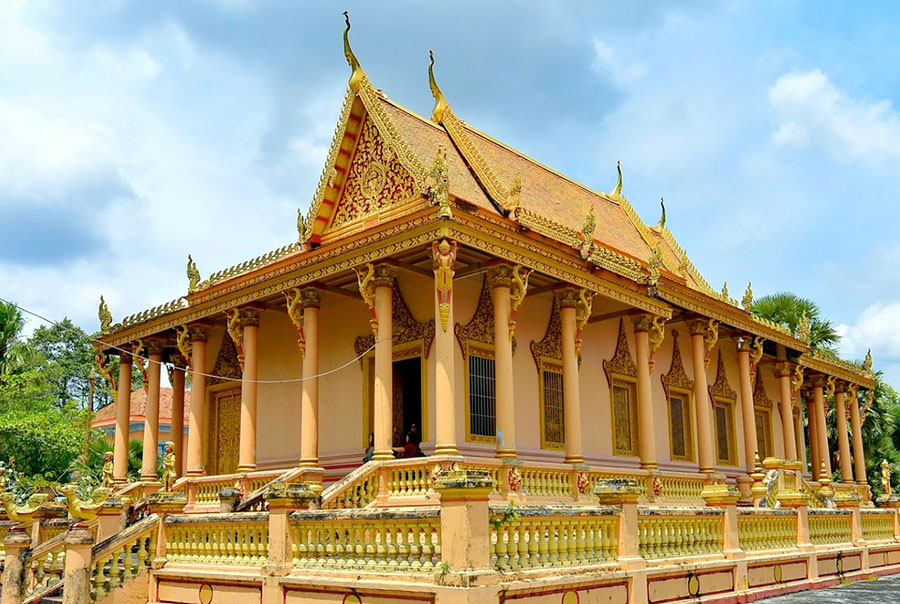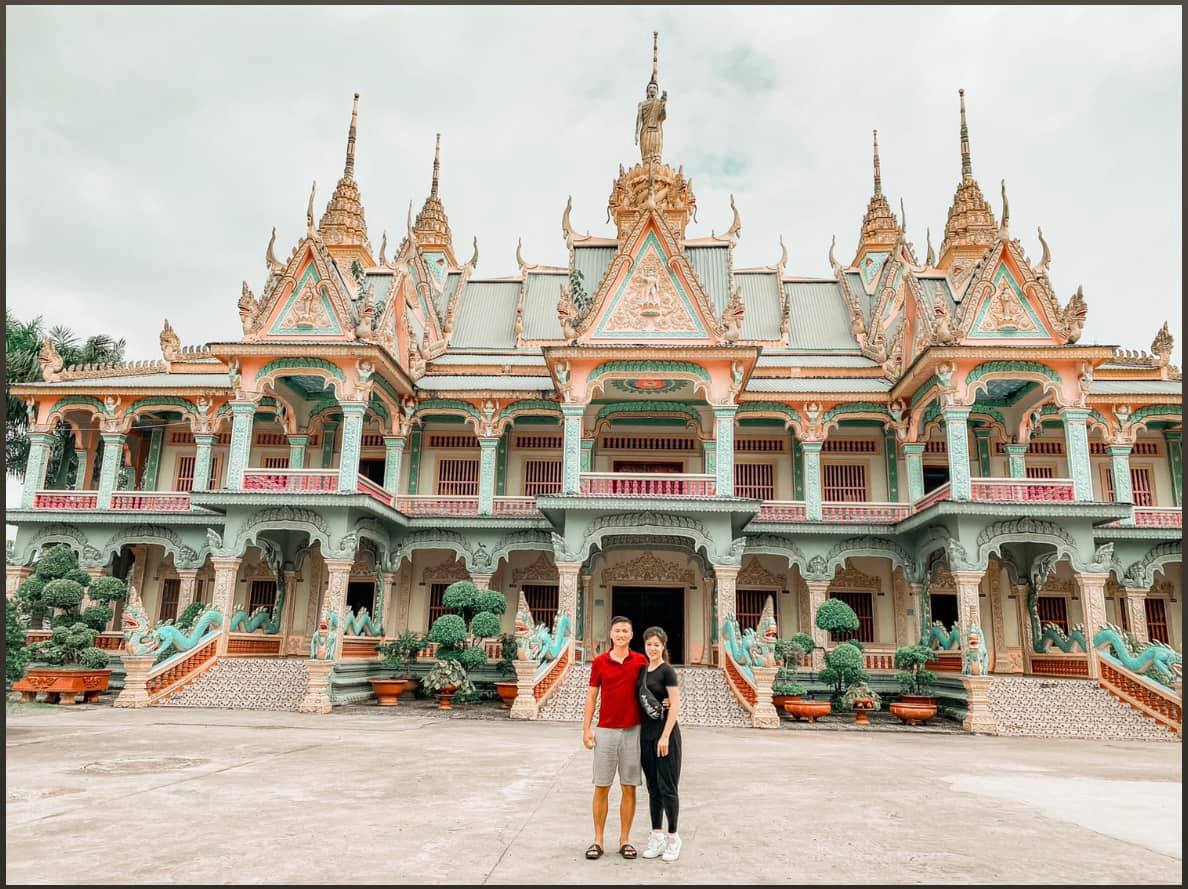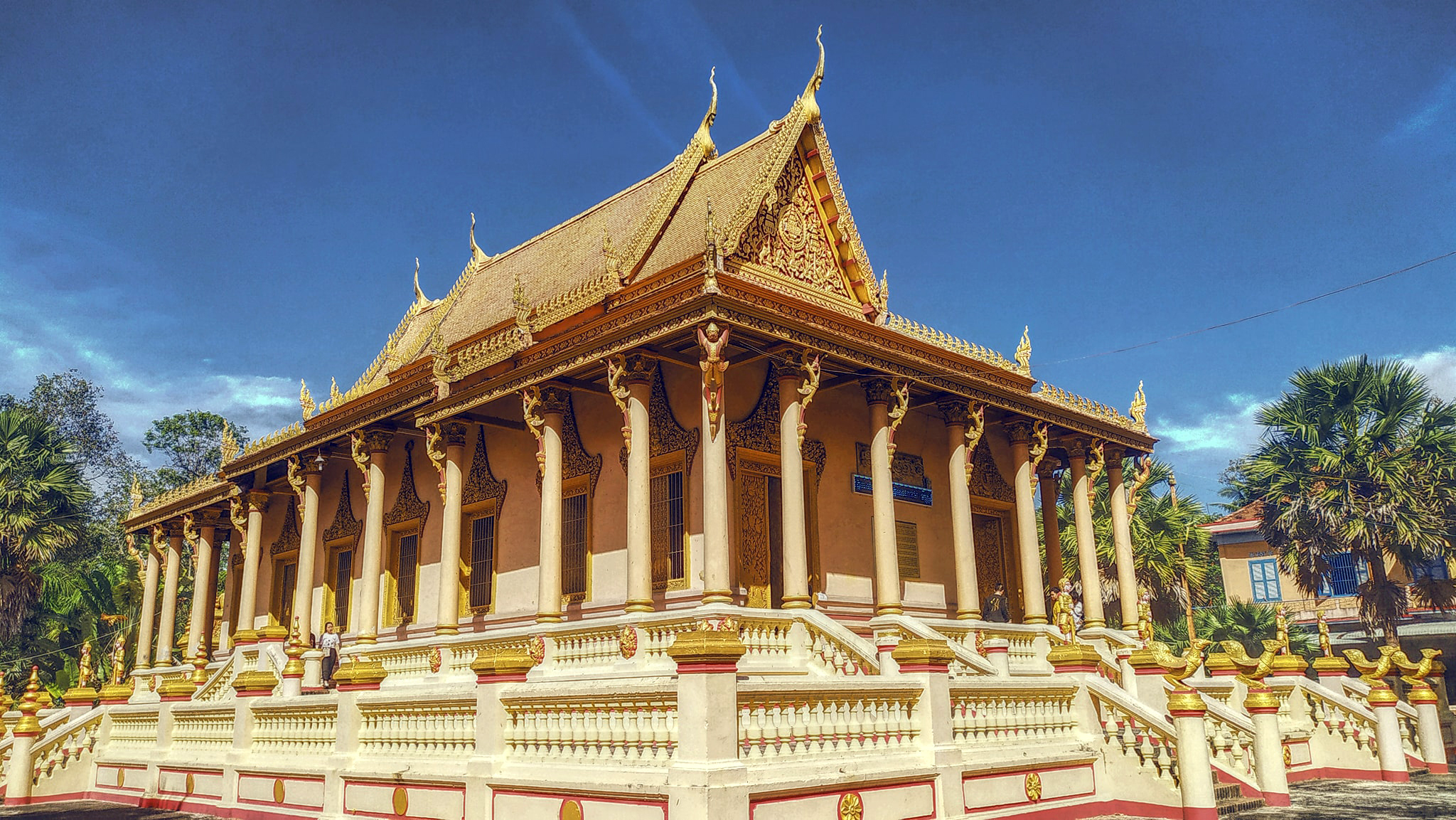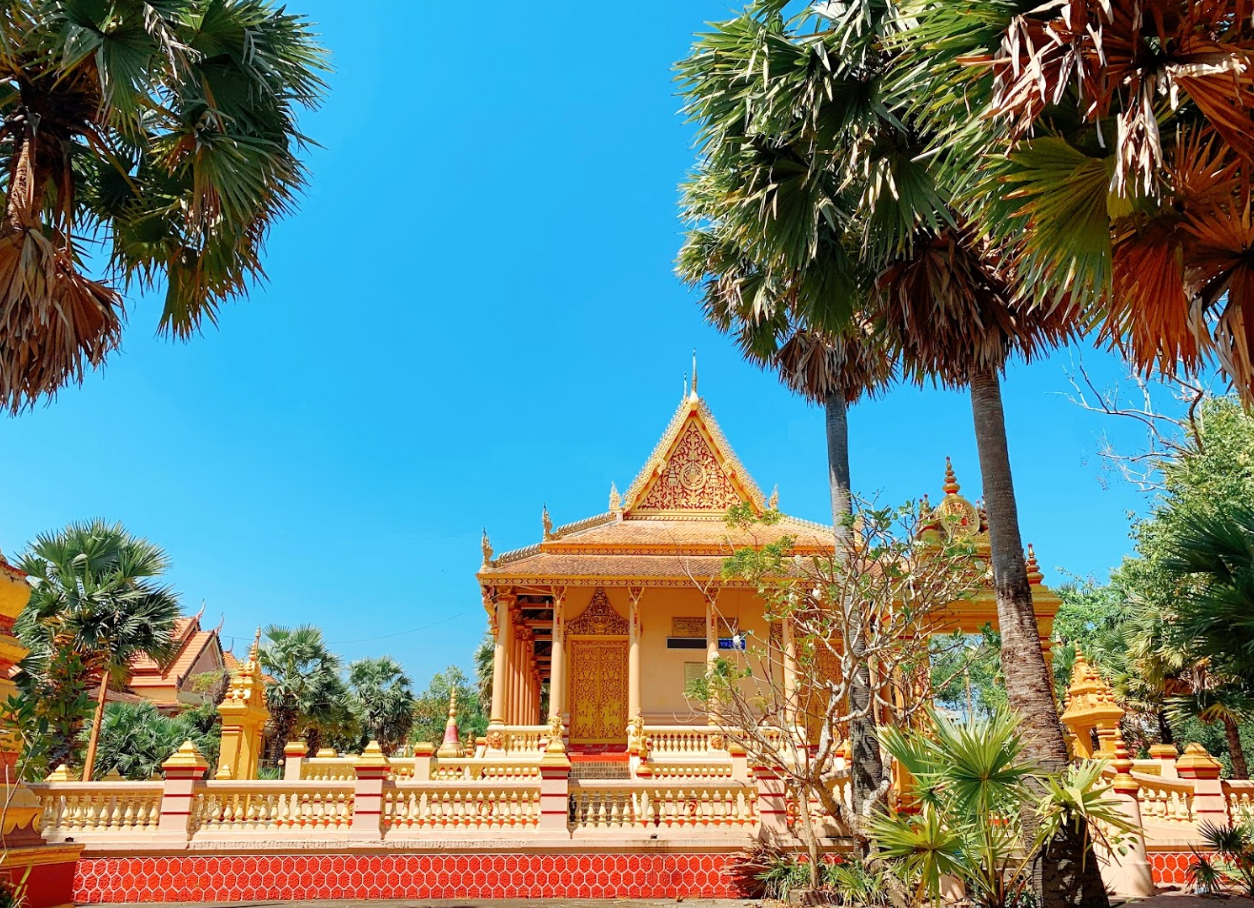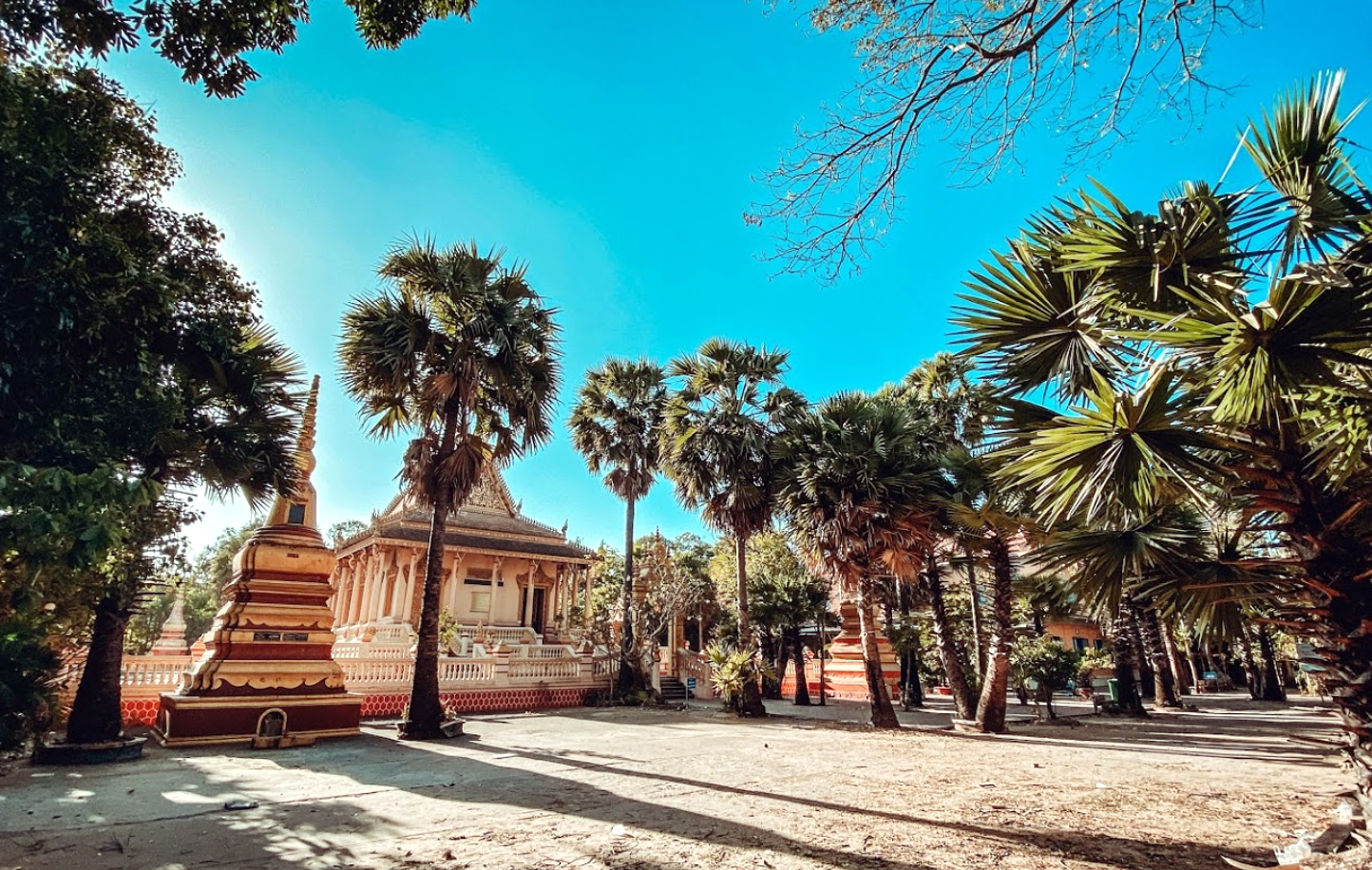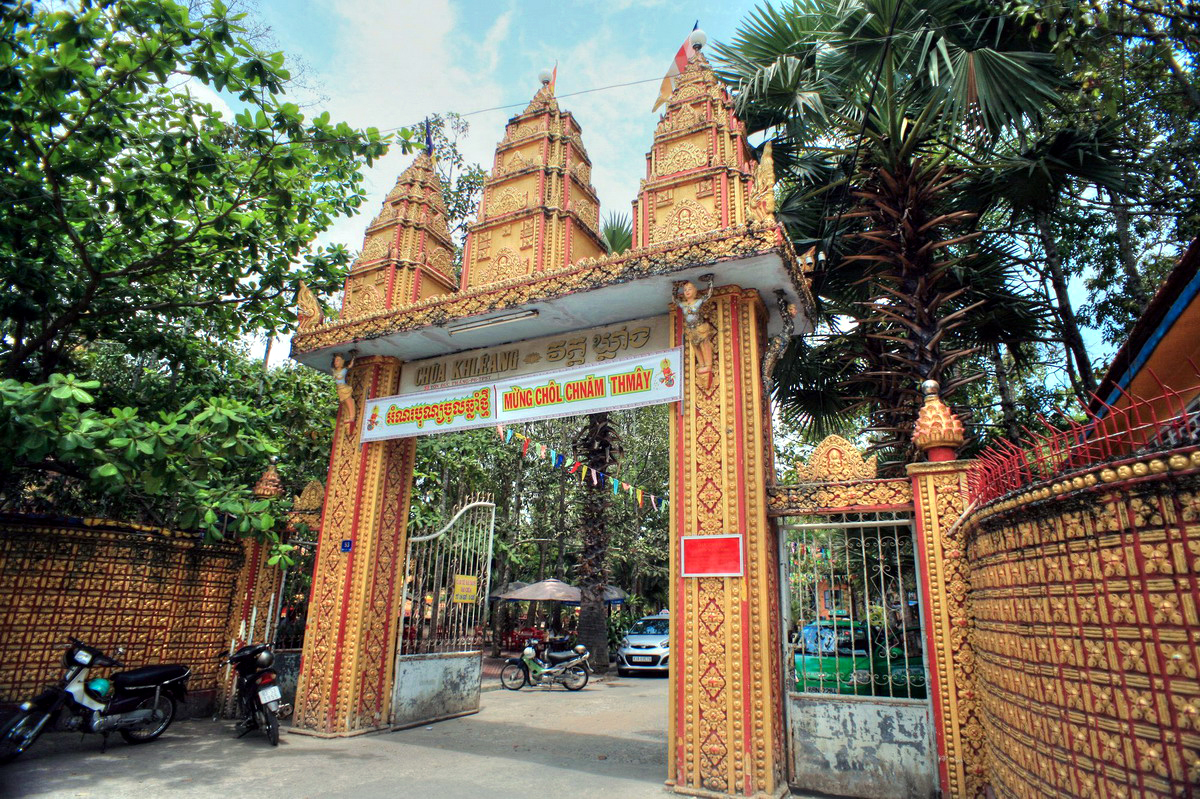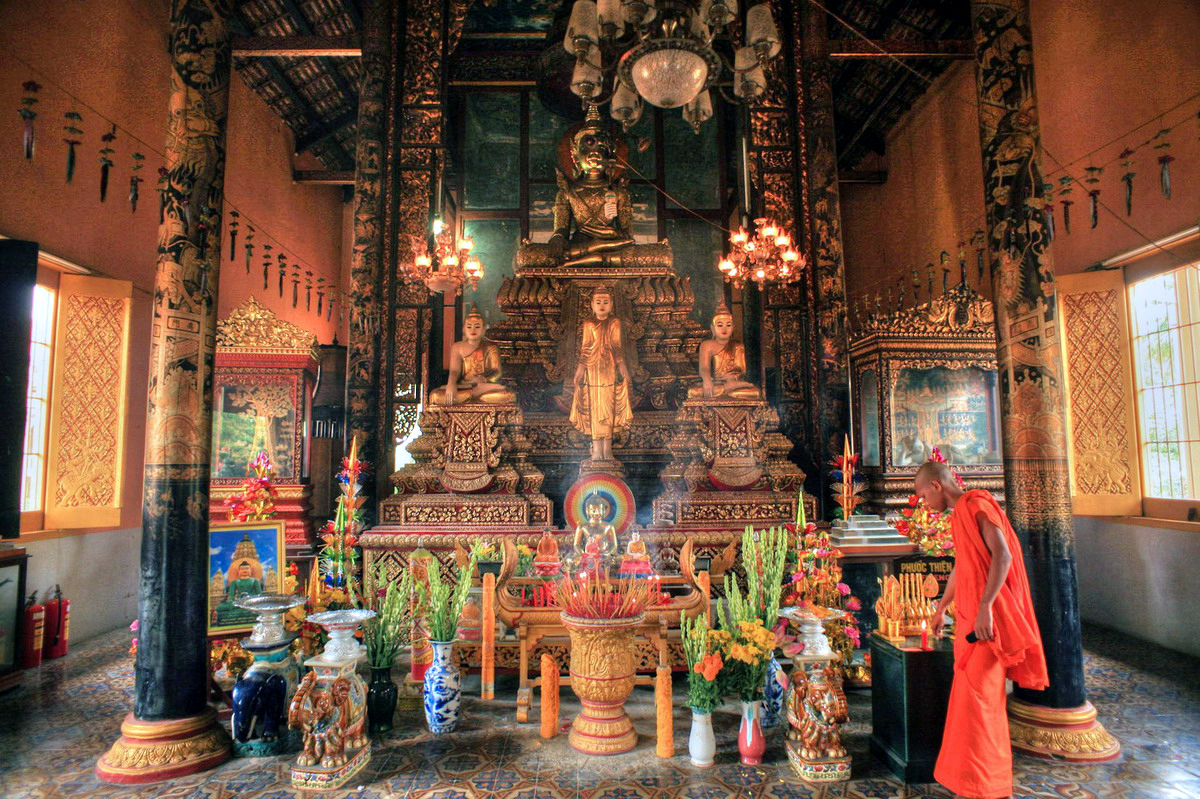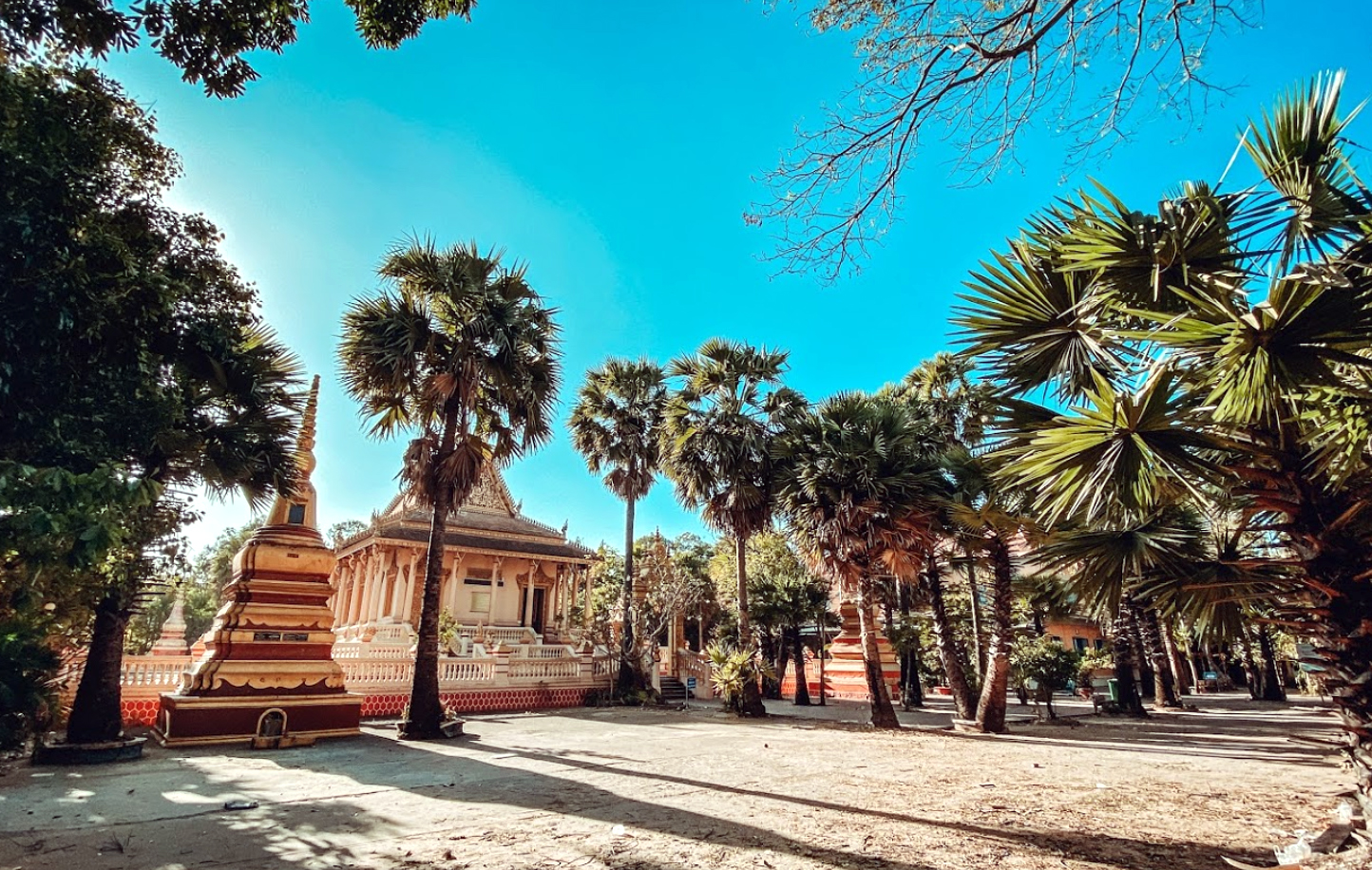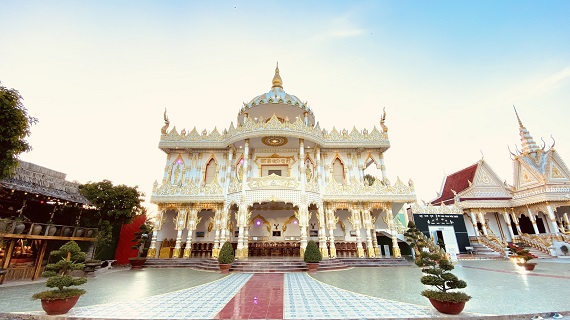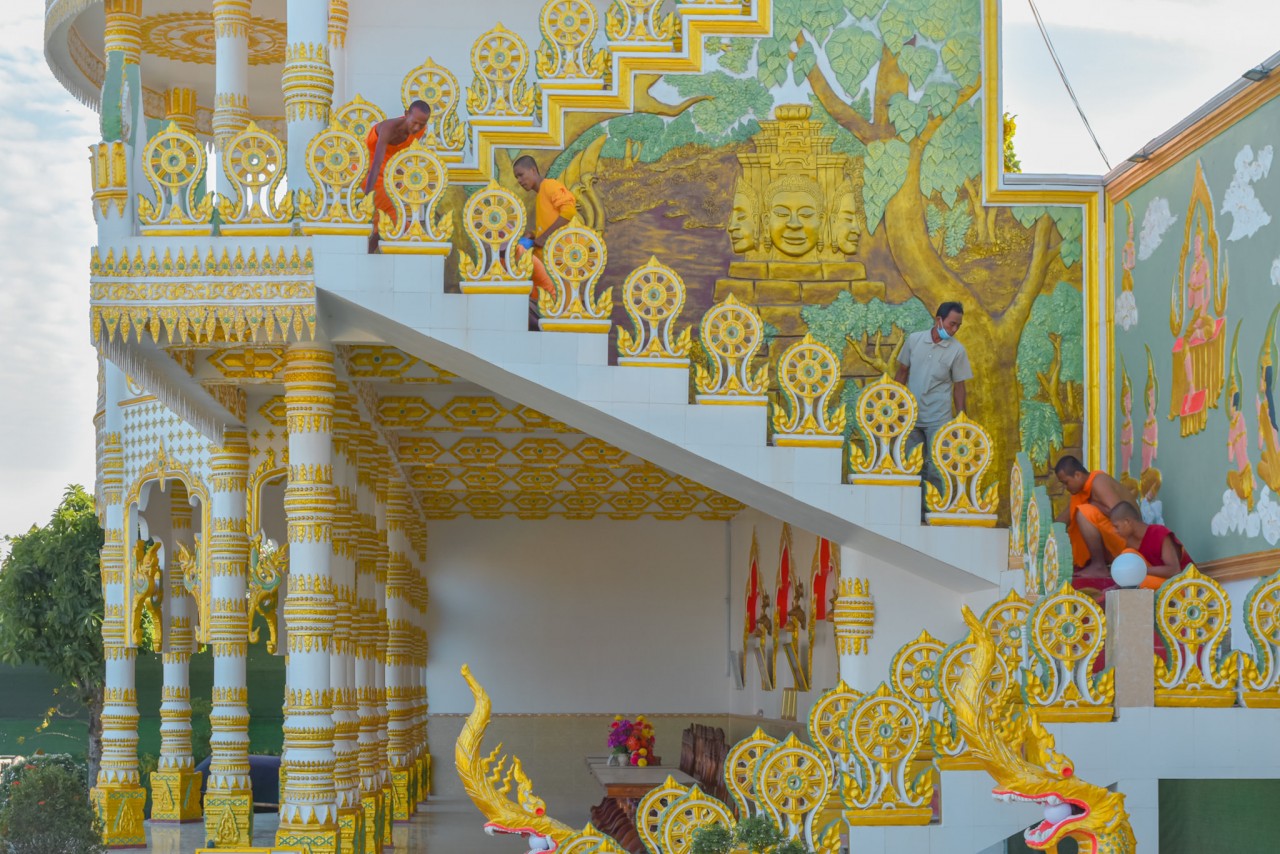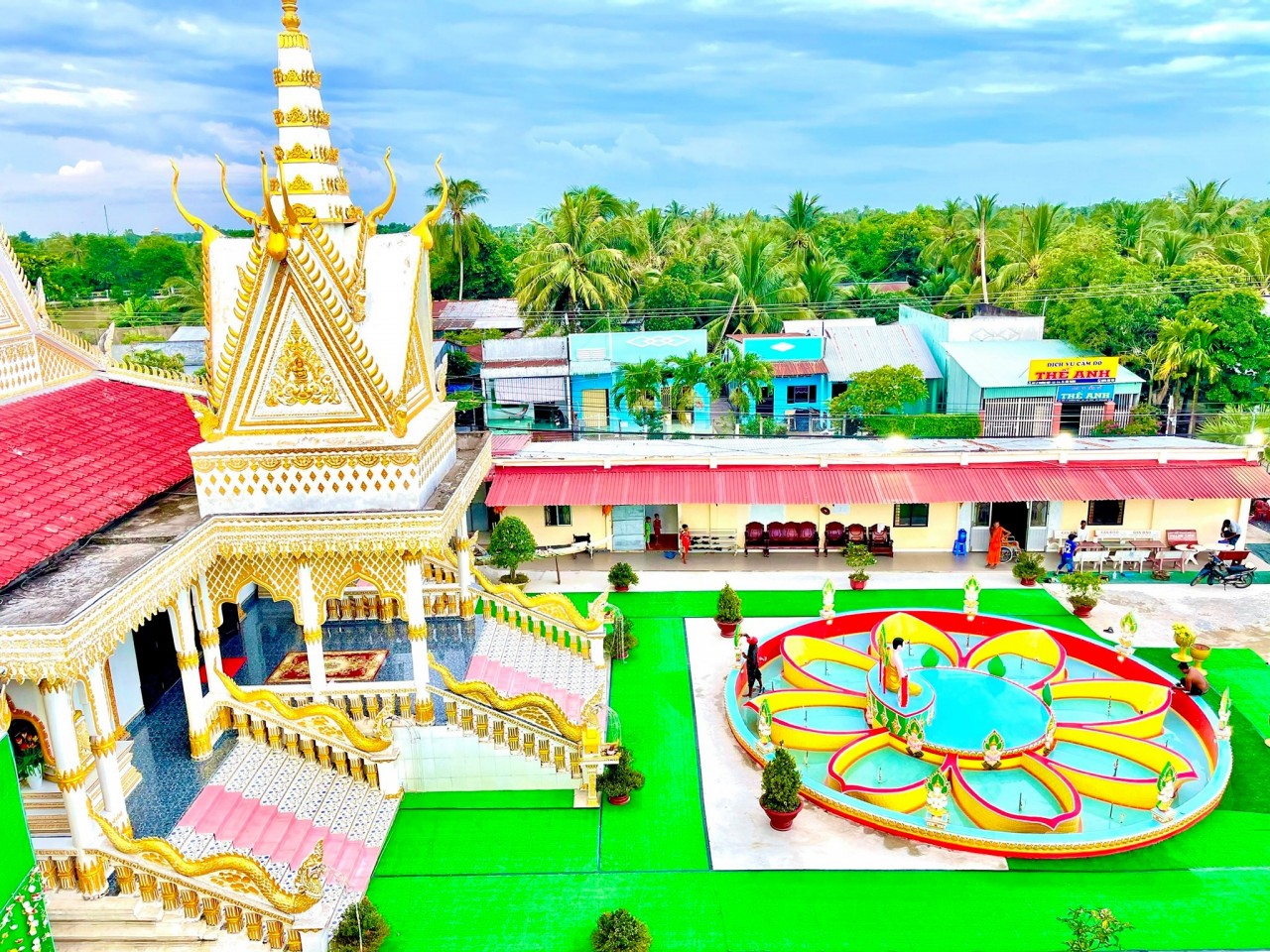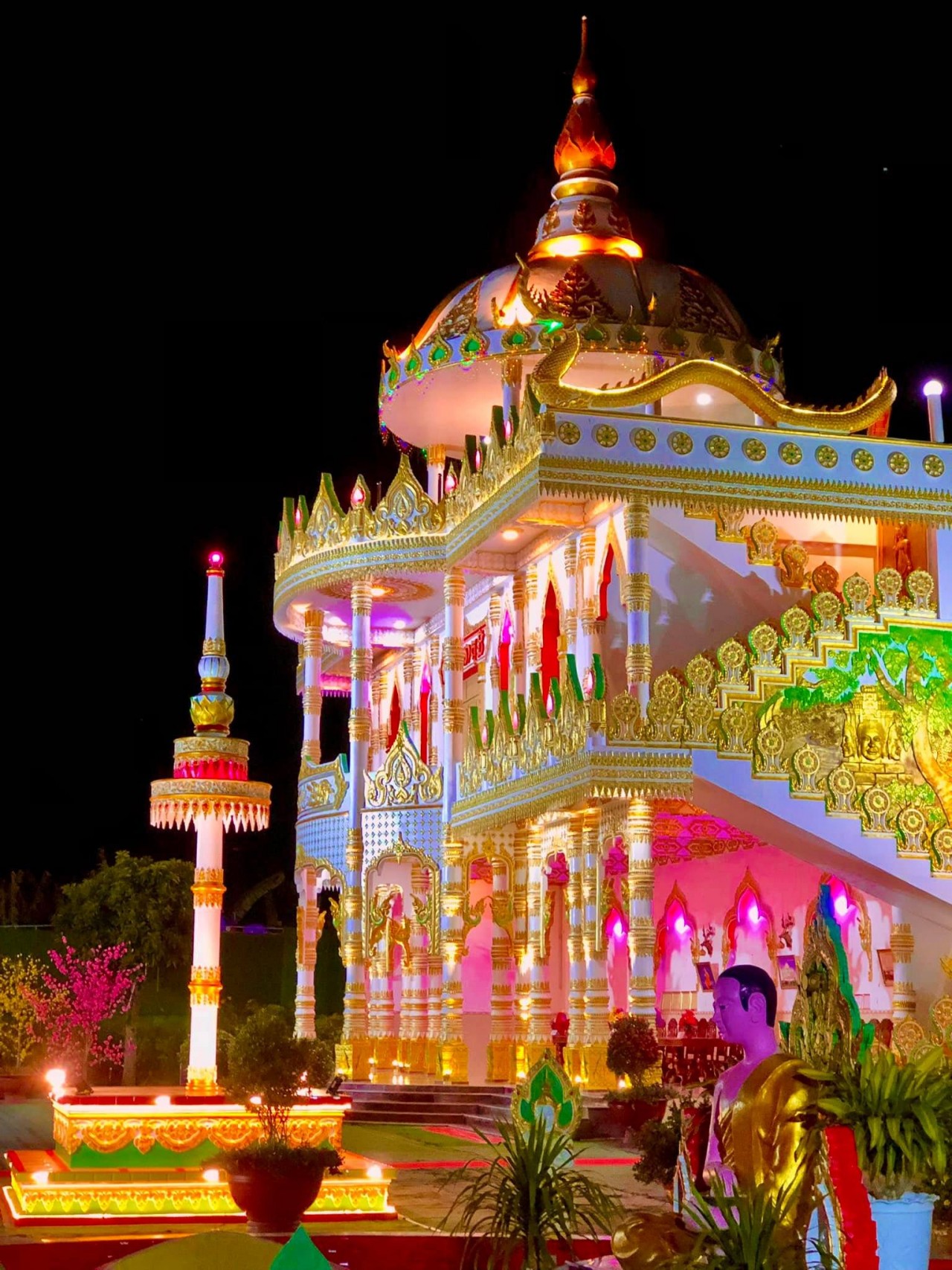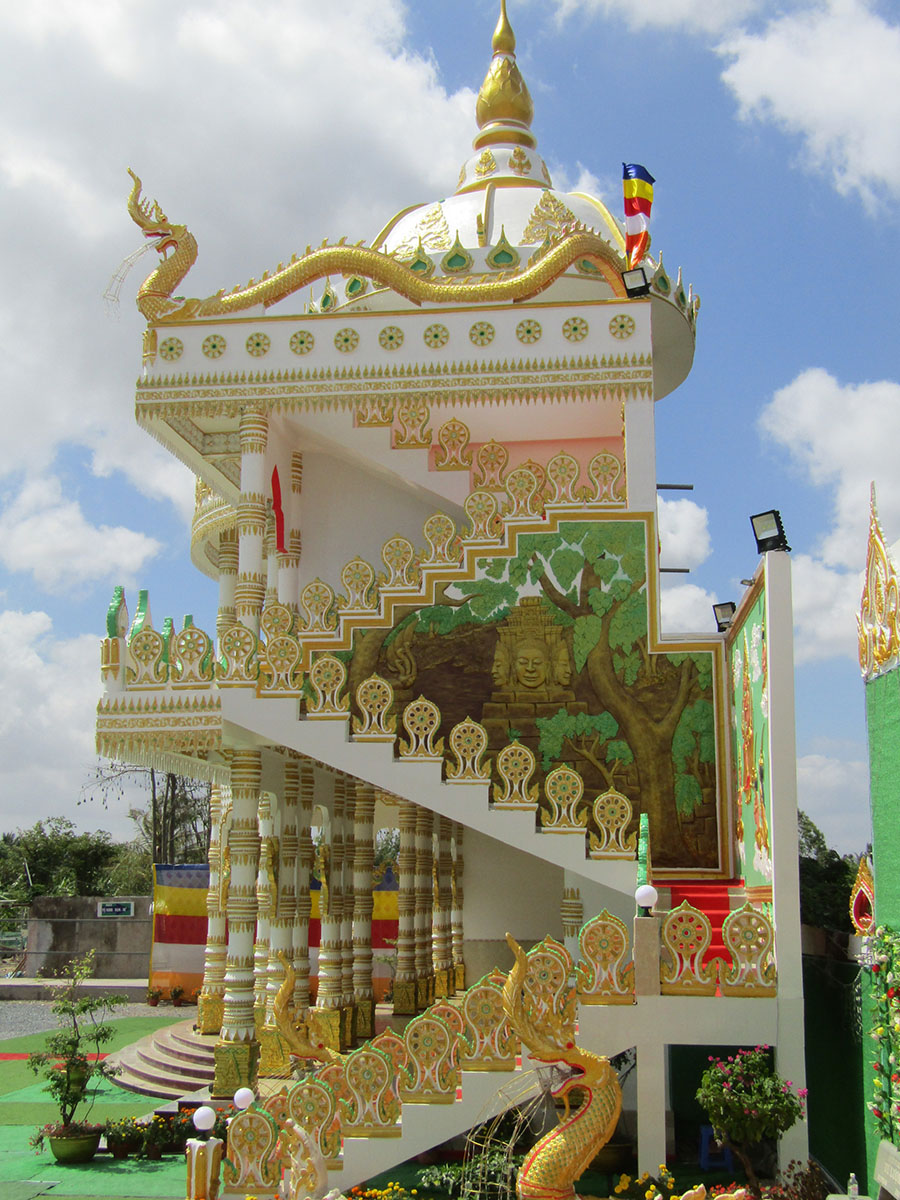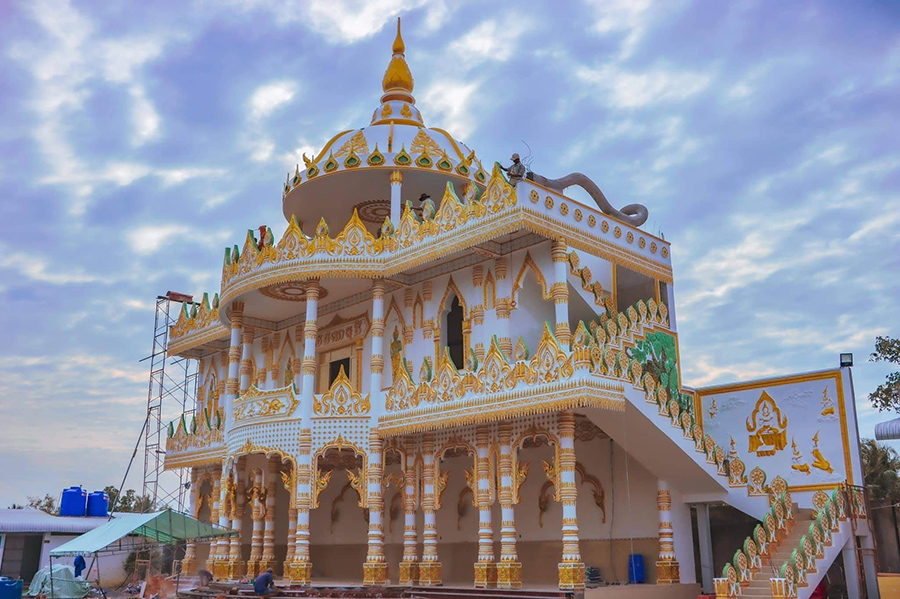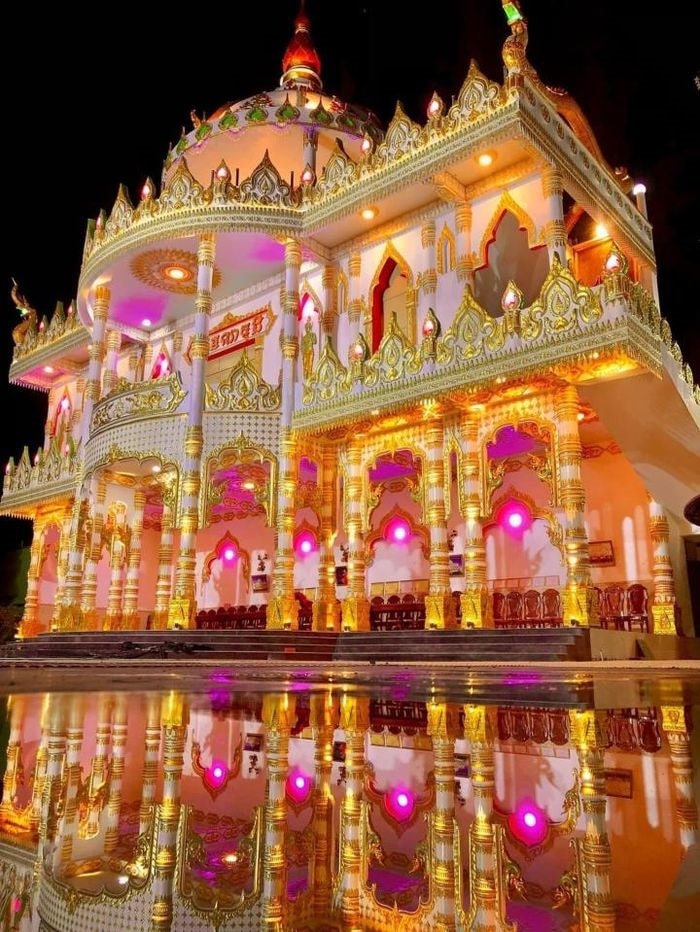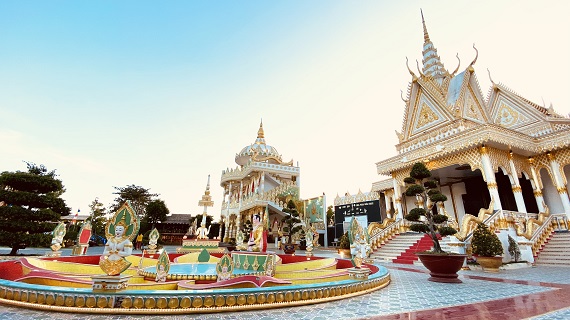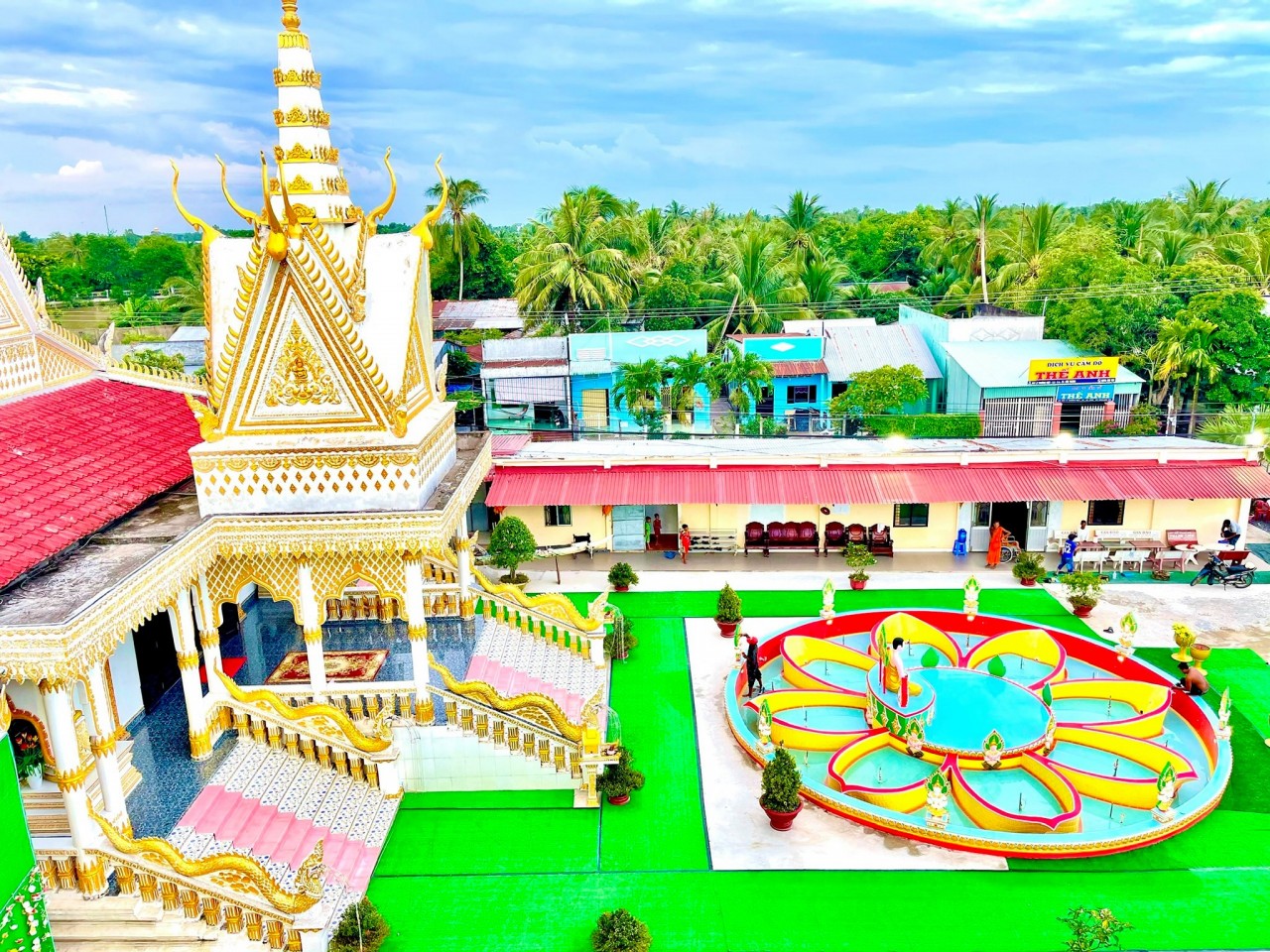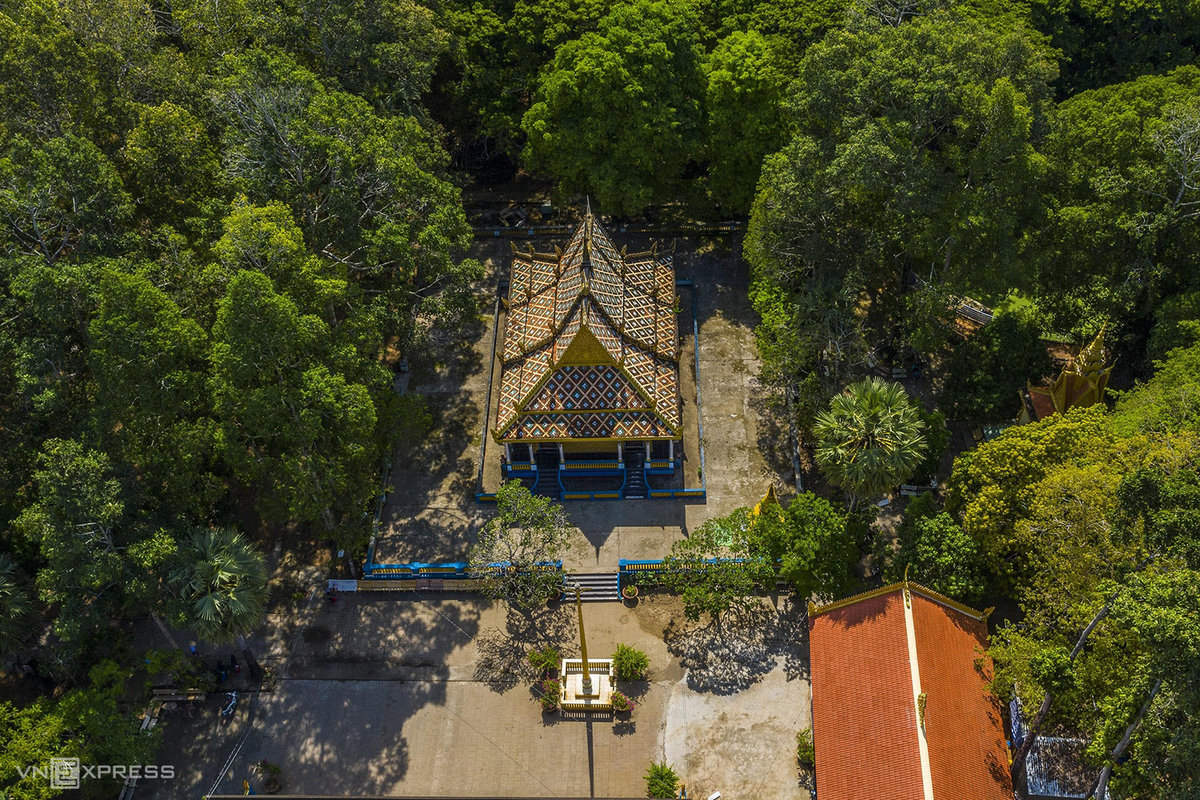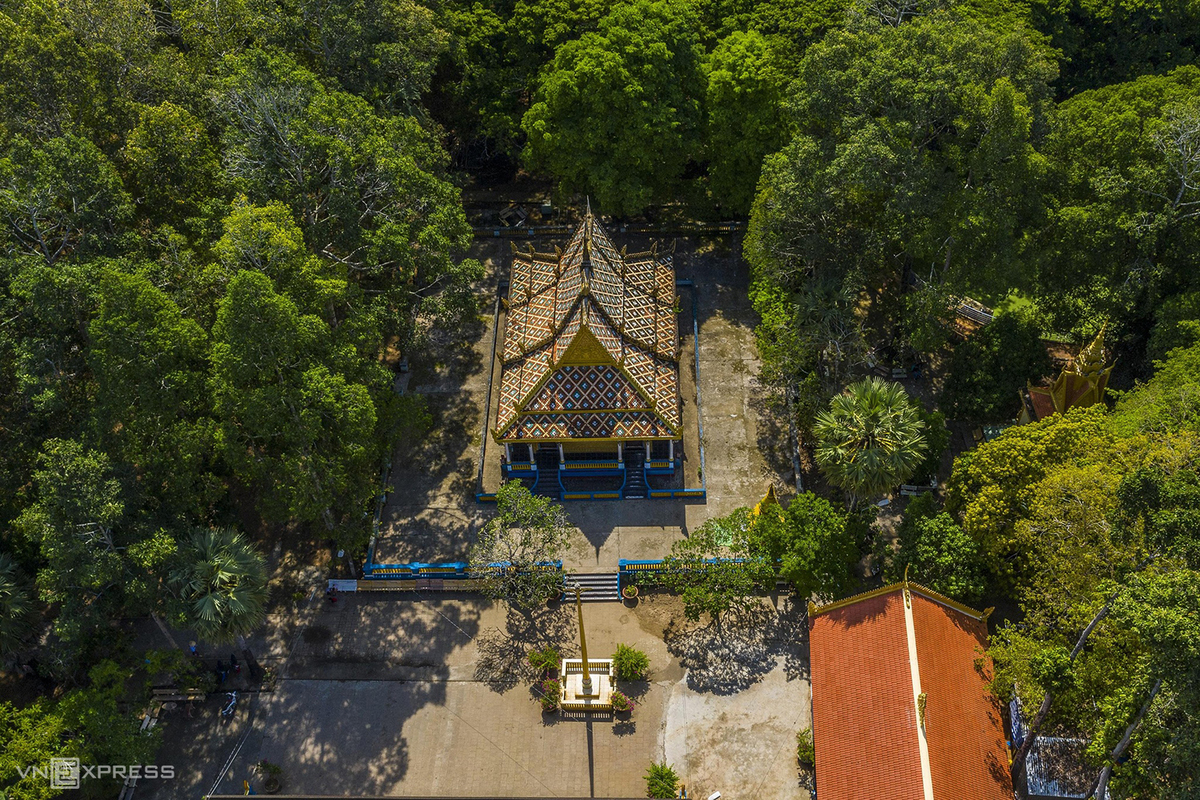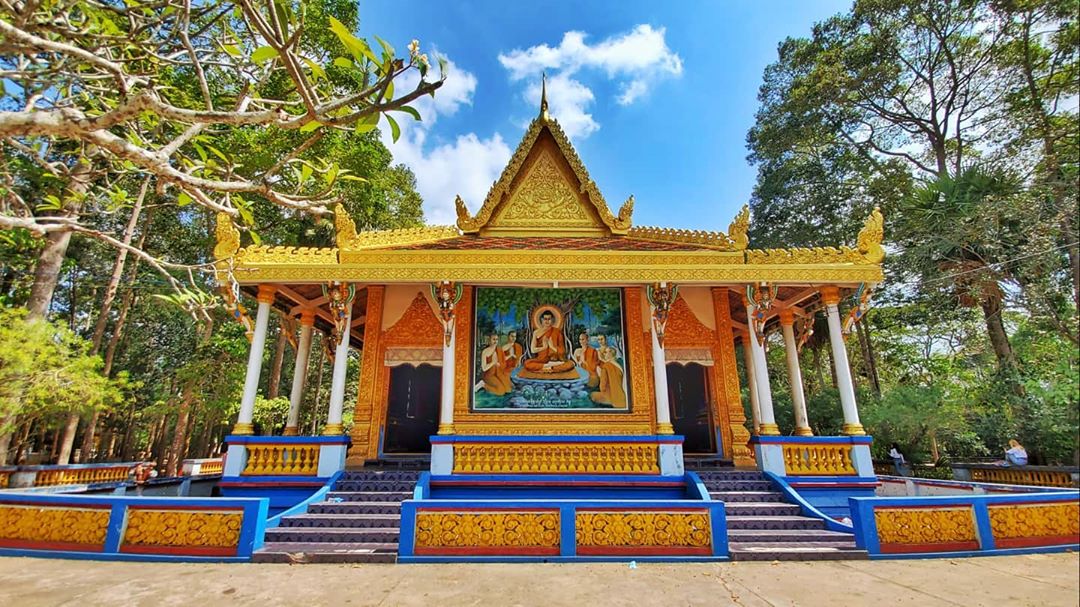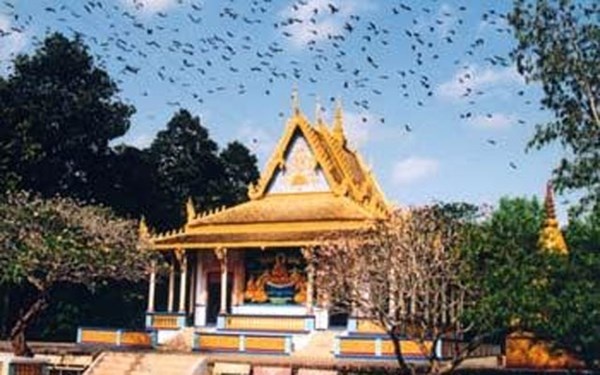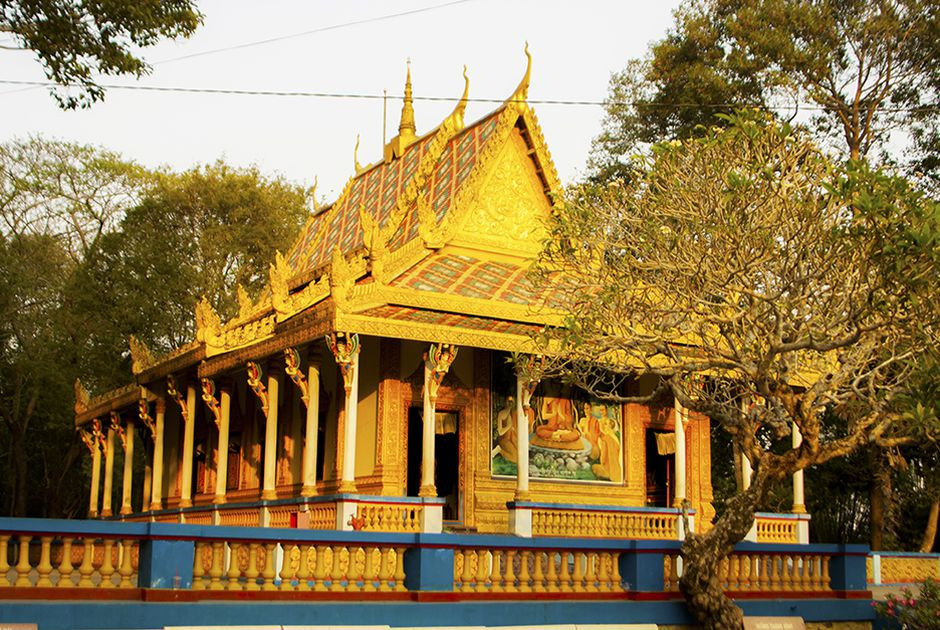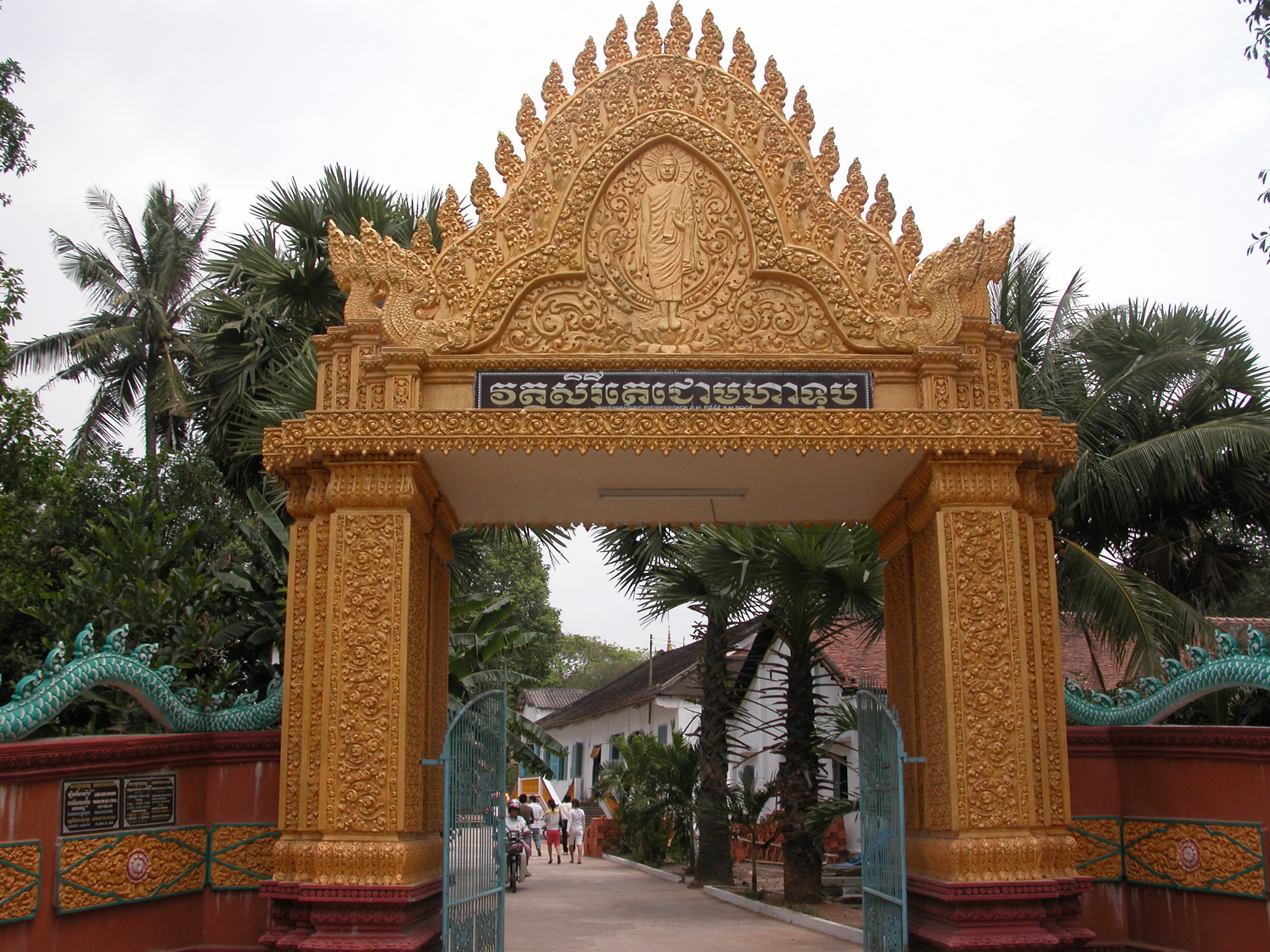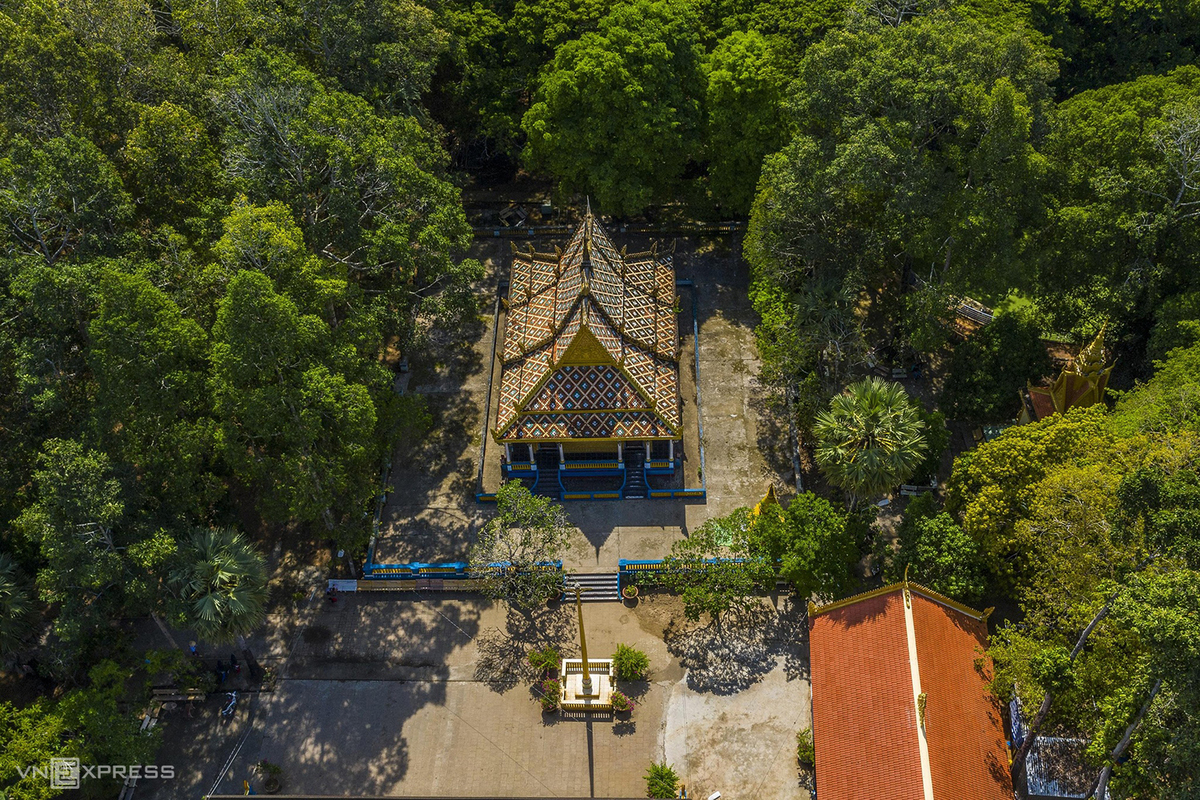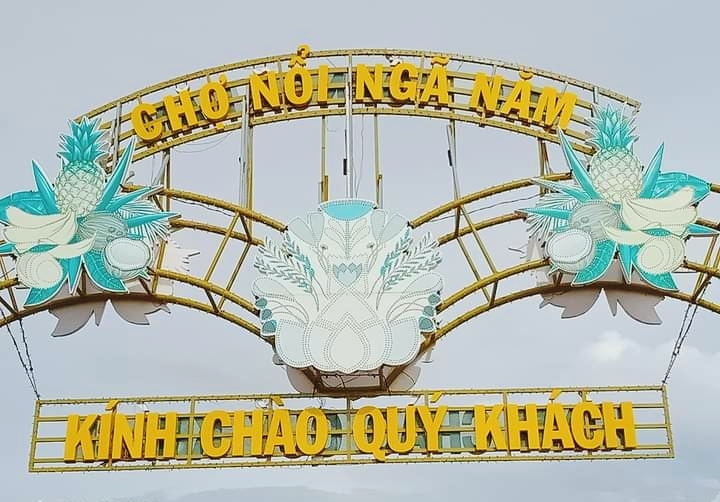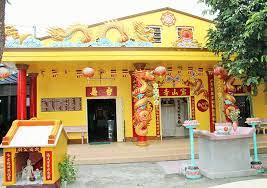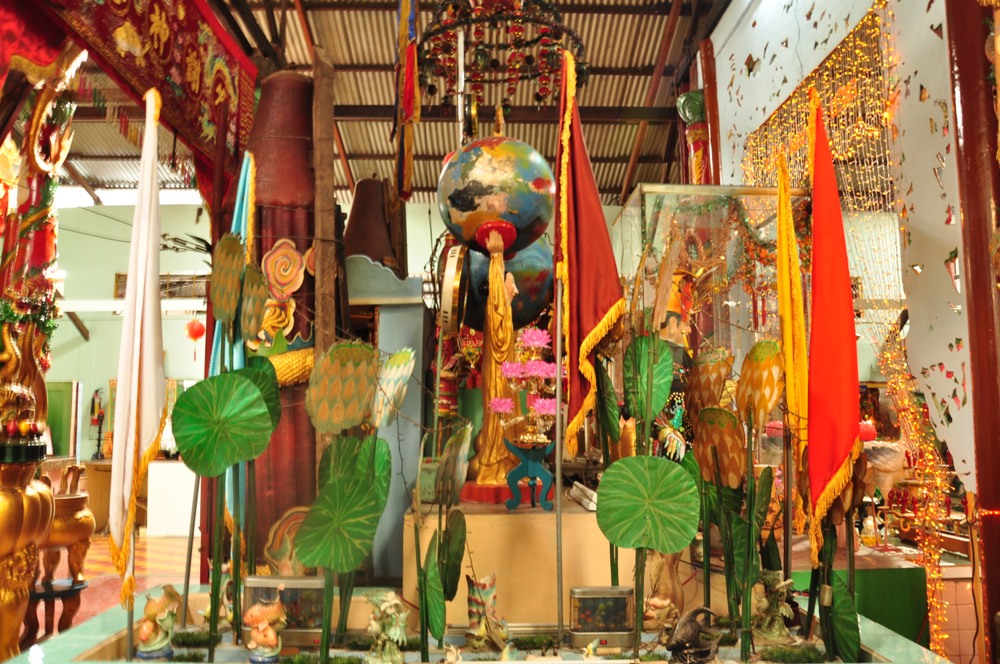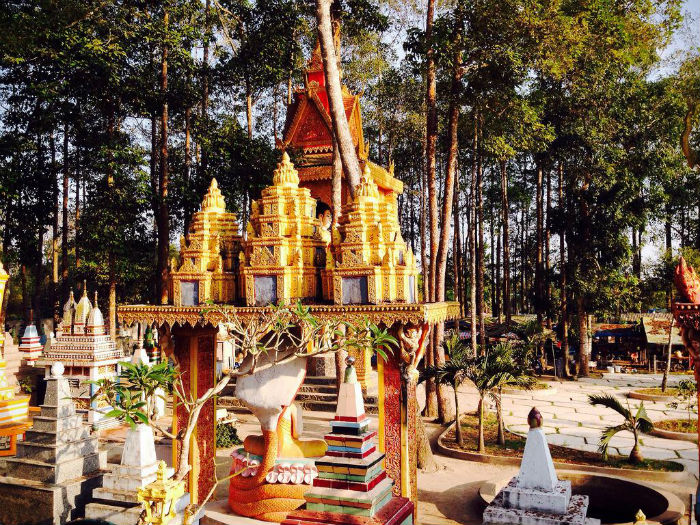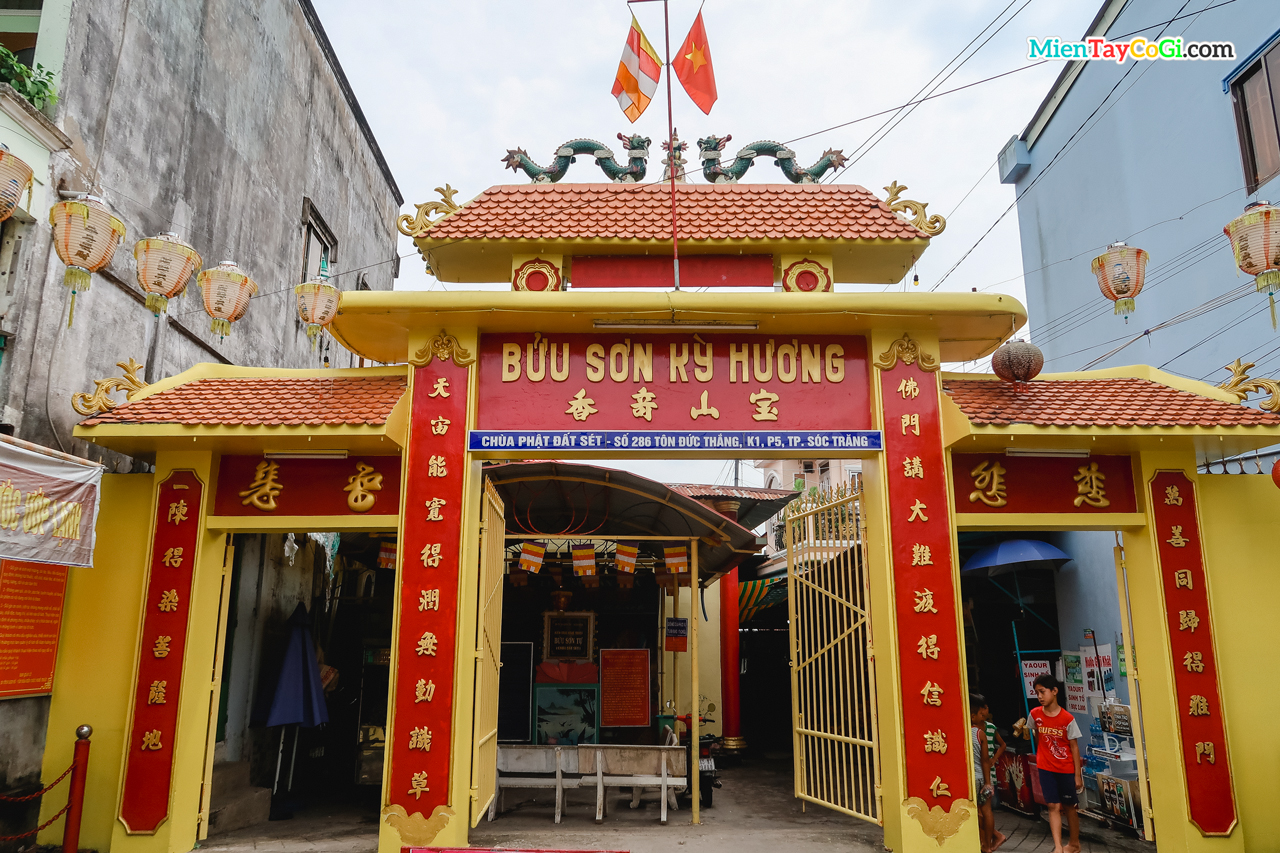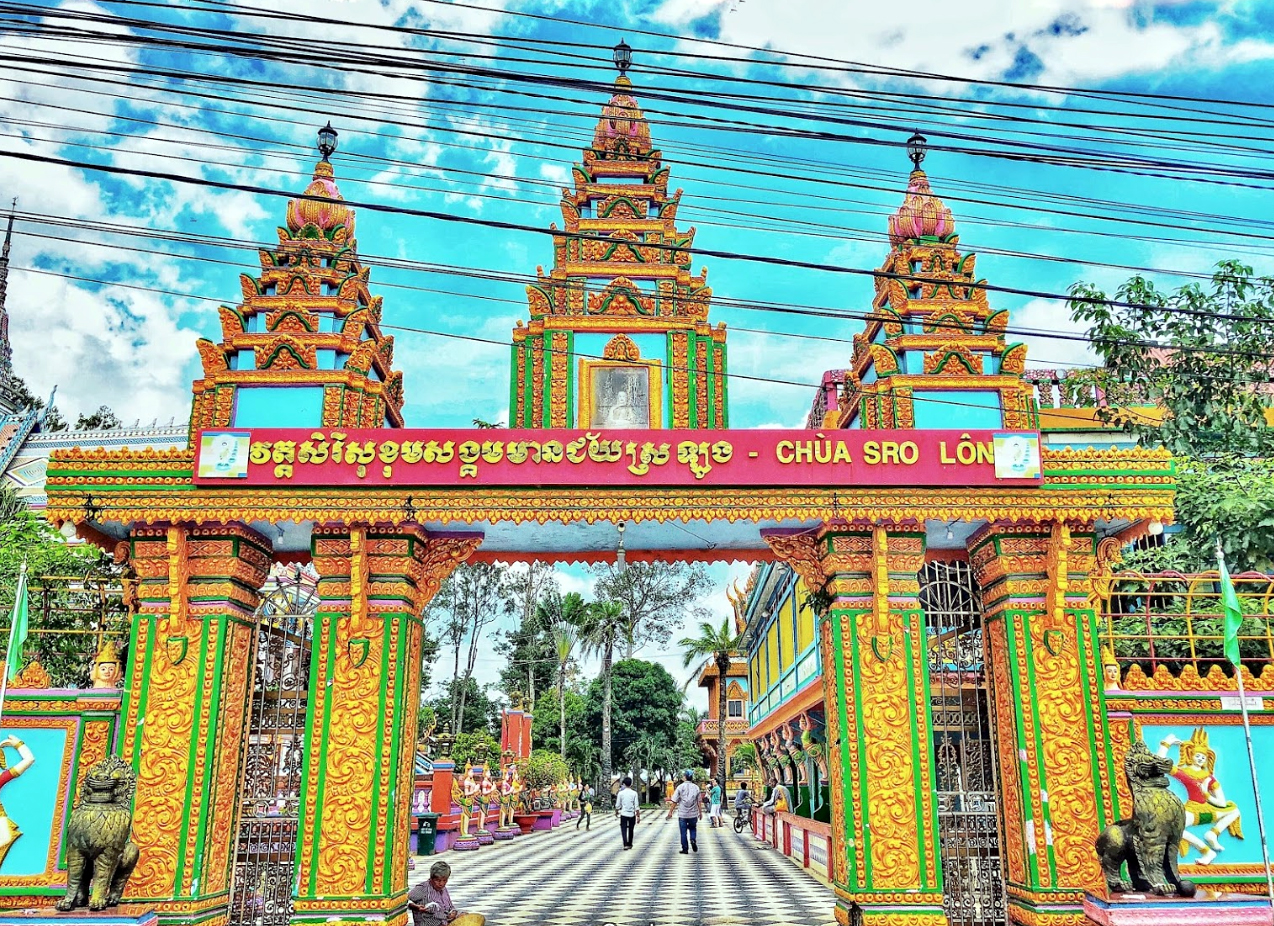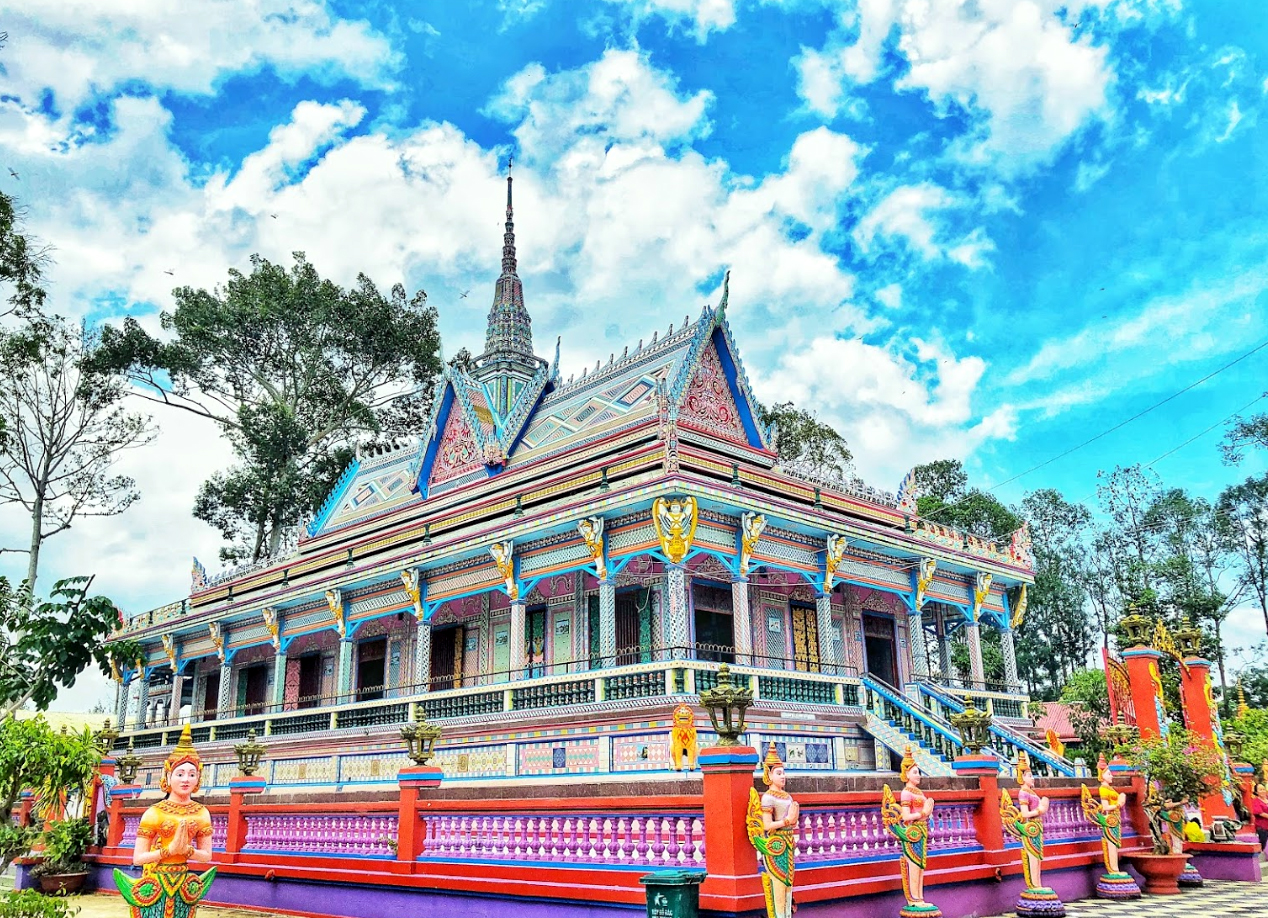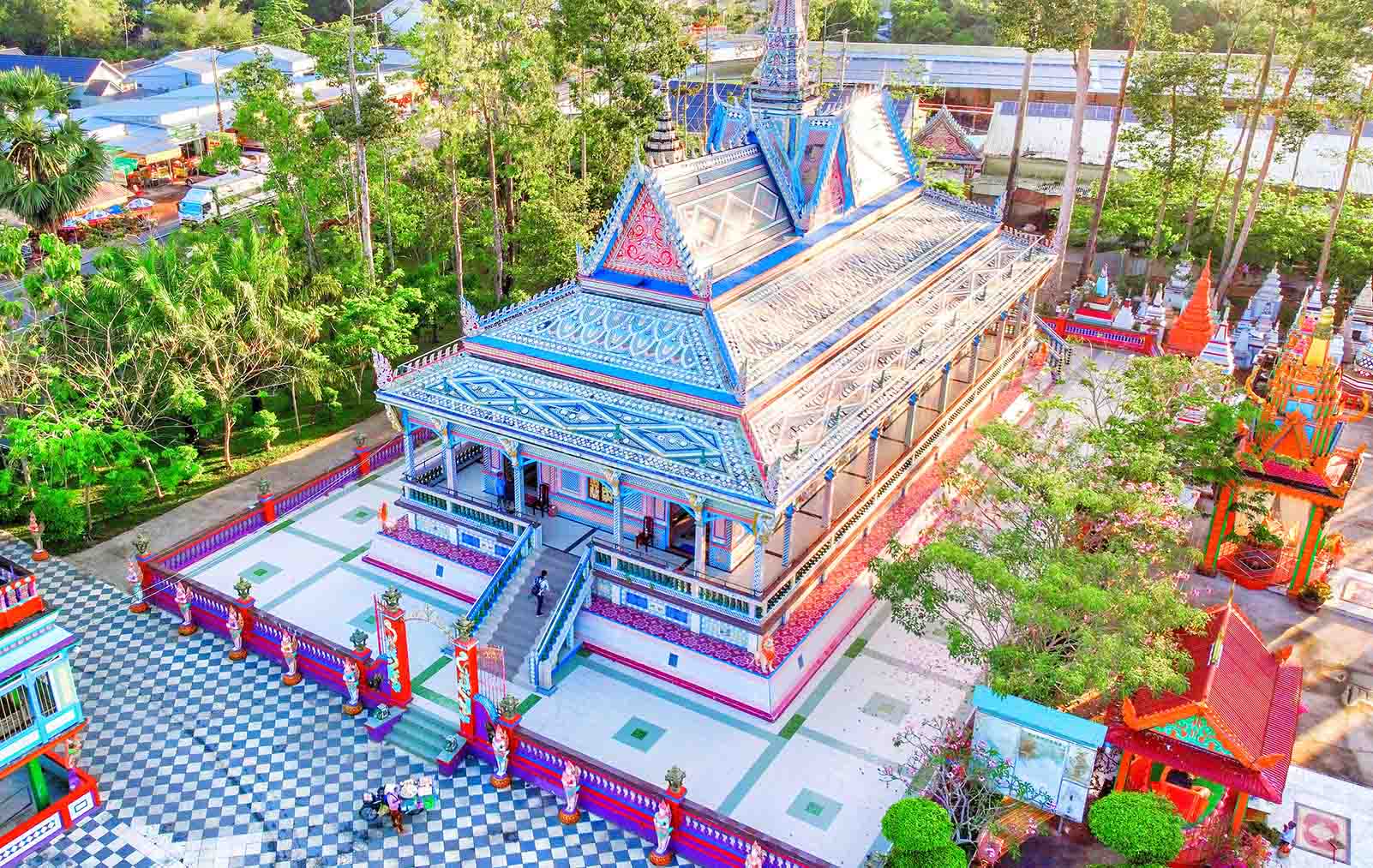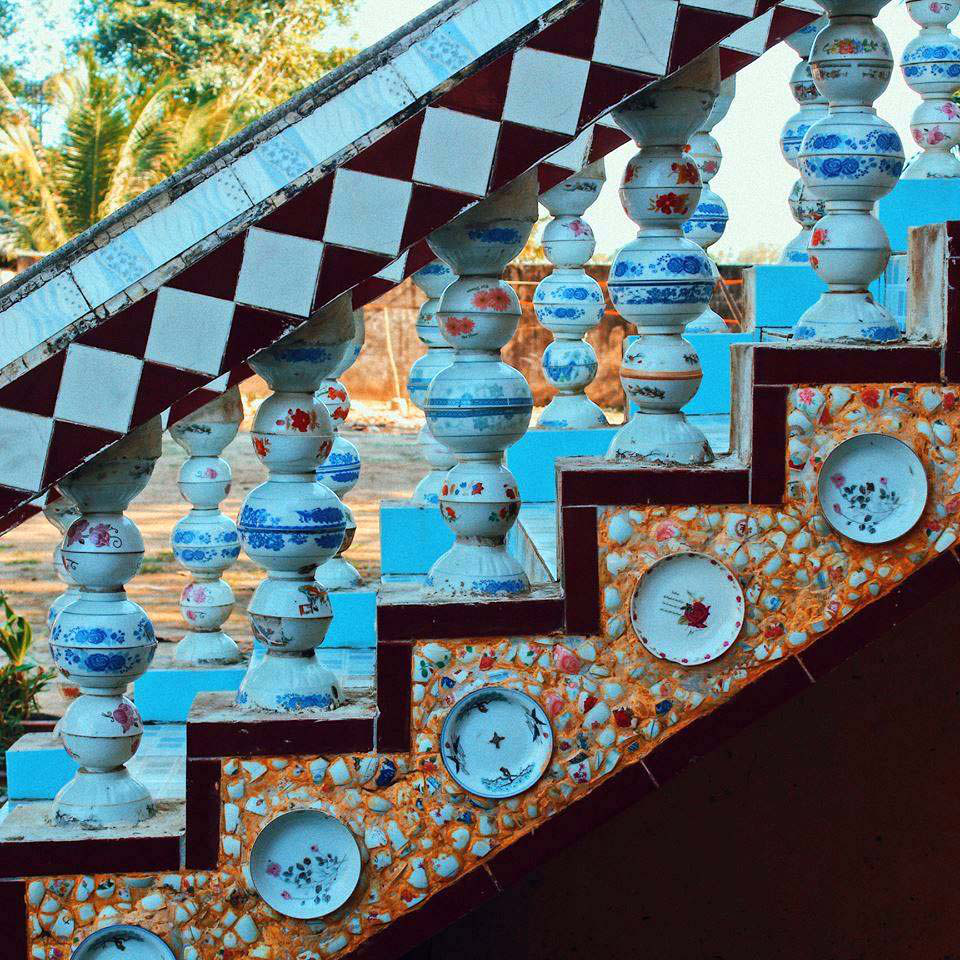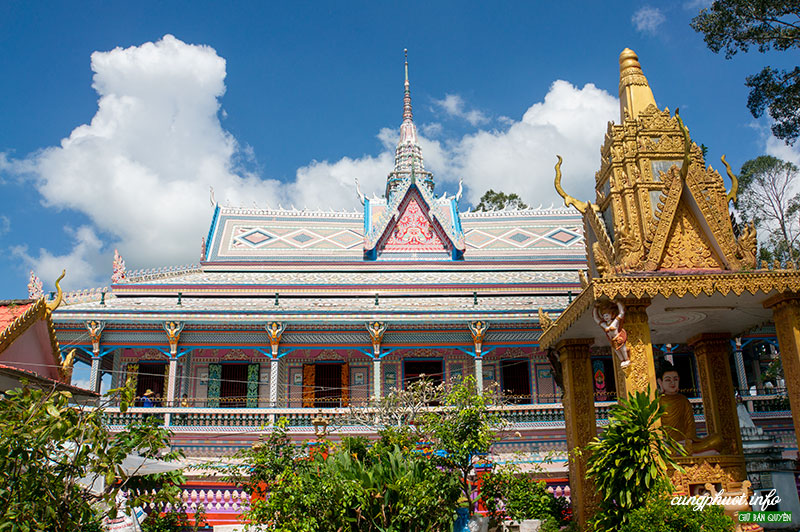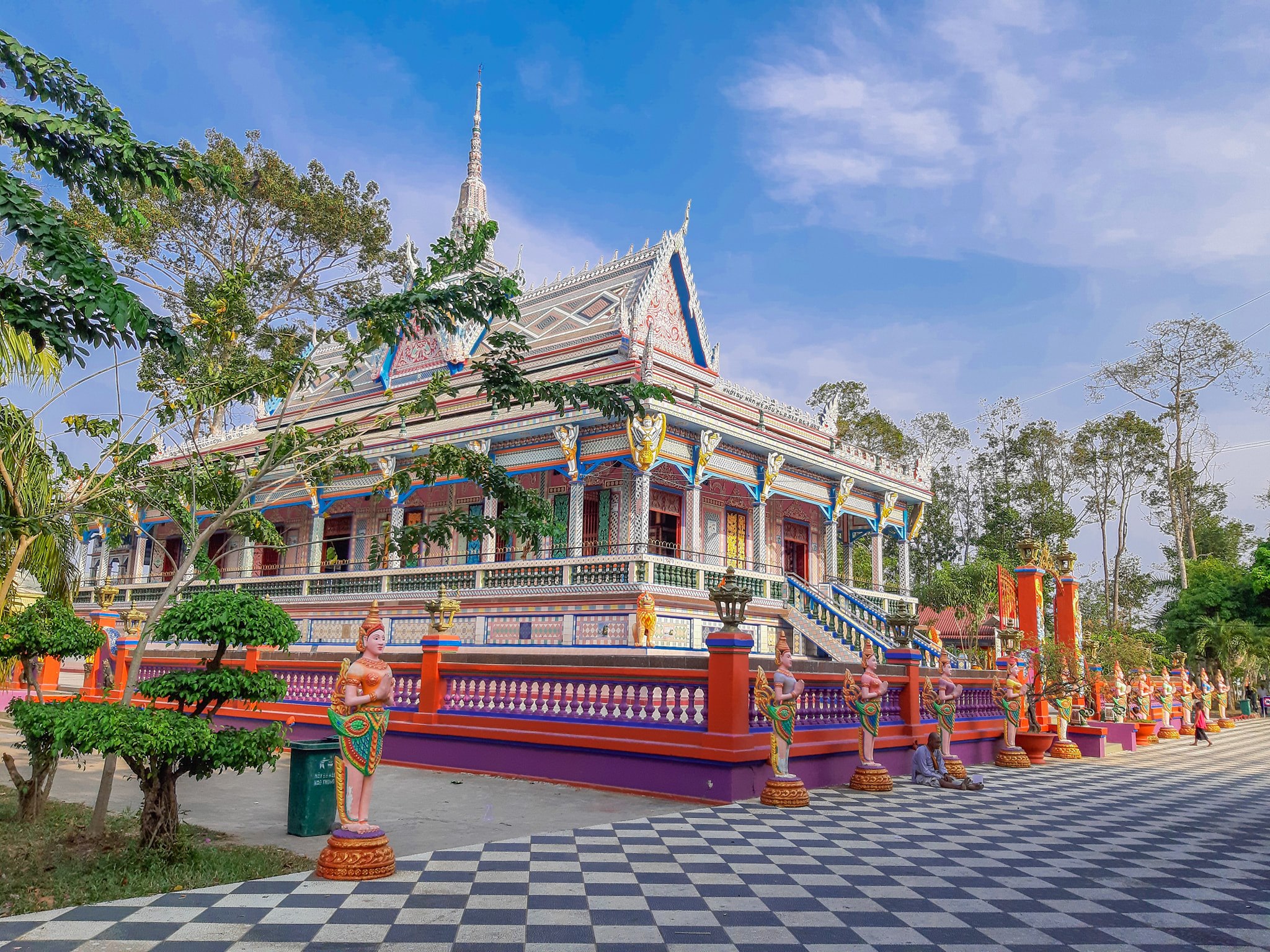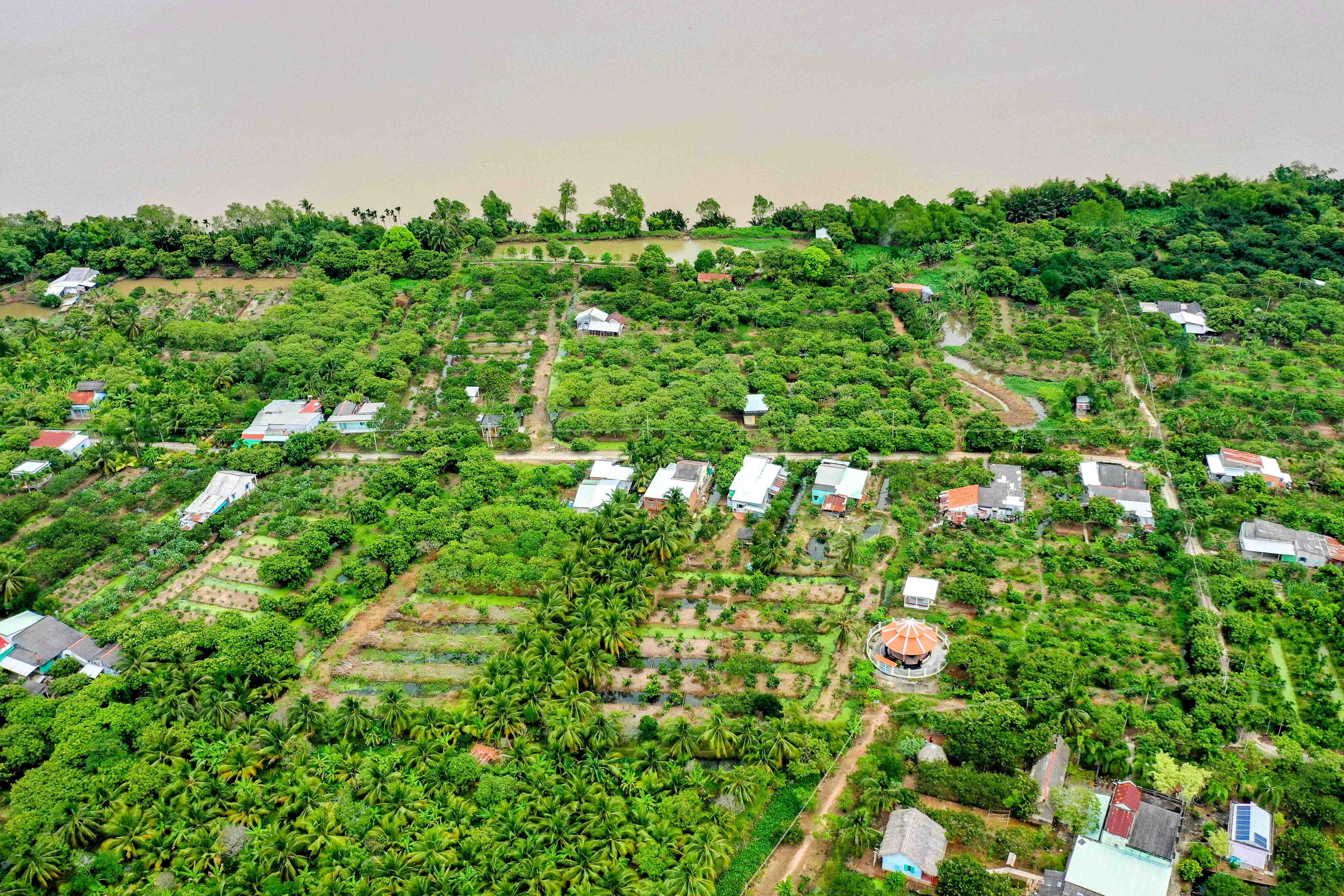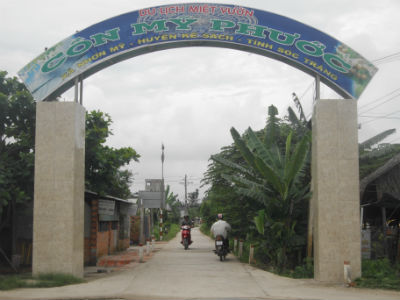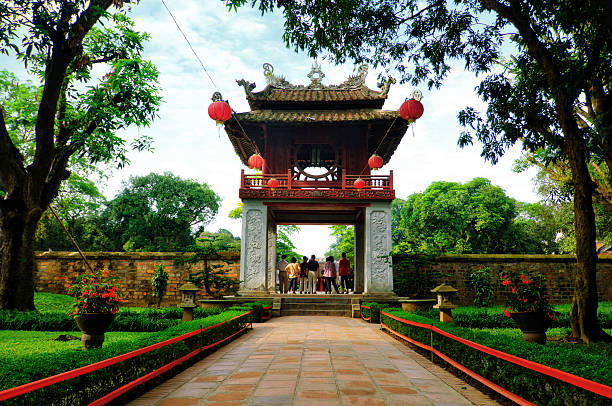If you have the opportunity to visit Buu Son Tu, visitors will have the opportunity to learn about the unique cultural, spiritual and religious life of the people of Soc Trang. Buu Son Tu, also known as Clay Pagoda, is located at 286, Ton Duc Thang Street, Group 1, Ward 5, Soc Trang City, Soc Trang Province. Clay Pagoda is not famous for its external architecture or large scale in area, but it is a unique pagoda in Vietnam because thousands of artifacts inside are shaped from clay and made from clay. There are pairs of candles and giant incense sticks. According to the elders, Buu Son pagoda was previously just a small hermitage built around the beginning of the 19th century, built by Mr. Ngo Kim Tay for the purpose of practicing at home. At first, the pagoda was made entirely of available natural materials such as bamboo, paintings, etc. It was not until the fourth abbot, Mr. Ngo Kim Tong (1909 - 1970), that the small temple was renovated and expanded. to have Buu Son throne like now. Buu Son pagoda has an area of about 400m2 with traditional architecture of wooden columns and corrugated iron roof, but this ancient pagoda contains many unique cultural and artistic values. There are nearly 2,000 large and small Buddha statues, along with sacred animals and worship objects, molded by artist Ngo Kim Tong in clay for 42 years (from 1929 to 1970). Traveling to Soc Trang, visiting Clay Pagoda, everyone admires and admires the genius who used his lifelong determination and love for Buddhism to create this miraculous work. Mr. Ngo Kim Tong is the son of Mr. Ngo Kim Dinh. When he was young, he was often sick. In 1929, when he was 20 years old, he fell seriously ill and thought he would not survive. The family had no choice but to take Mr. Tong to a mountain temple in An Giang province for treatment and to pray to God and Buddha. While taking medicine and practicing meditation and calming down, he gradually got better. Mr. Ngo Kim Tong became a monk and returned to the temple to become the fourth generation abbot, an artist who did not go to sculpting or painting classes, did not study with a formal teacher, but only through folk contemplation created amazing works. Clay sculptures have extremely rare religious historical value. The raw materials used for making statues are mainly clay, dug by Mr. Tong from fields a few kilometers away from the pagoda, brought back to dry, then put in a mortar and pounded with a pestle until smooth, filtering out all impurities and roots. trees, grass roots, take fine soil and mix it with sawdust to make incense (incense powder) and acacia acacia to create a fragrant mixture. At that time, he just started shaping the statues. The statues were smooth and not cracked. In addition, he also researched and applied support methods for sculpting statues to meet high aesthetic requirements. He used wire mesh and wooden trees to build the ribs, then used mosquito net fabric to cover it and covered it with mixed materials to make the statue. , the exterior is covered with a layer of metallic paint and varnish. Not only with his skillful and talented hands, but also with his extremely rich imagination, hundreds of large and small statues were formed without duplication. Each statue has a different look, clearly showing the spirit on each face. It is also the result of the mind of a Buddha-oriented person, the diligence, diligence, and quietness that brings sweetness to life. Mr. Ngo Kim Tong also created other works, the most prominent of which is the Da Bao tower built in 1939 when he was only 30 years old, about 4 meters high and very sophisticatedly designed. The tower has 13 floors, each floor has 16 doors, each door has a Buddha statue, in total Da Bao tower has 208 doors, 208 Buddhas and around the tower there are 156 winding dragons flying into the sky. tall, protecting the tower. Bao Toa is the second unique building built in 1940, about 2 meters high. Above there is a lotus flower with 1000 petals in an octagonal shape, below there are 16 fairies standing as attendants. The base of the tower is shaped like 4 animals of the four sacred animals (unicorn, dragon, tortoise, phoenix) and 12 unique, lively and impressive fish transformed into dragons. Looking at this tower and lotus flower as a whole, visitors will immediately think of a talented sculptor who took advantage of Buddhist teachings to create statues that speak the Buddha's meaning. In the worship space above the ceiling, there is hanging a chandelier called "Luc Long Dang" also made of clay, consisting of three peaks with 6 curved dragons symbolizing the six provinces of the Southwest region, their tails bunched together. each other, heads sticking out in all directions. The dragon's body is made entirely of clay with many delicate details, so the weight is quite heavy. At the bottom of the lamp is an upside-down lotus that radiates its petals to the altar. The lotus petals are quite thin, but according to the passage of time, Luc Long Dang has not fallen or chipped at all. This is a rare artistic masterpiece and the last work of his life. Around the pagoda, contributing to guarding the system of Buddha statues, there are many animal statues also made of clay. The most prominent and sharpest is the pair of Kim Lans holding their heads high in front of the altar in the middle of the hall, holding pearls in their mouths. The feet resting on the ball look so majestic, plus the statues of Thanh Su, Bach Ho, Long Ma,... some are gentle and some are very majestic. Clay Pagoda is not only famous for its thousands of statues made of clay, but is also known to tourists for its four rather special pairs of giant candles. In the last years of his life, he temporarily stopped making statues and cast candles to erect them in the main halls of the temple. He bought pure, unadulterated wax from Saigon many times with his trusted disciples, chopped the wax into pieces, melted it, and then "cast" the lamp. Because these lamps were too large, Mr. Ngo Kim Tong could not find a suitable mold, so he used roofing iron to make the mold. Pour wax into a large pan and cook continuously for many days until the tube was full until noon. 2 meters high. After a month, the new pairs of candles were completely dry. When the mold was removed, these pairs of lamps naturally took on the wavy shape of corrugated iron sheets. After several months of continuously doing this, he was able to cast six large candles (3 pairs). ), each weighs 200 kg, each pair is estimated to burn continuously for more than 70 years and two small candles each weigh 100 kg. The pair of candles was lit on the full moon day of July 1970 since the day Mr. Ngo Kim Tong The tree has been burning continuously for more than 40 years and nearly 1/5 of the tree remains. The works made from clay created by Mr. Ngo Kim Tong more than 60 years ago are still intact over time. However, what all tourists and scientists cannot explain is that all of the most famous and strange works in the world were created by a monk. I just finished 3rd grade at the village school and don't know anything about the art of painting.
Soc Trang 1497 view From January to December
Ngày cập nhật : 01/04/2023


 vn
vn en
en ja
ja ko
ko zh
zh


















